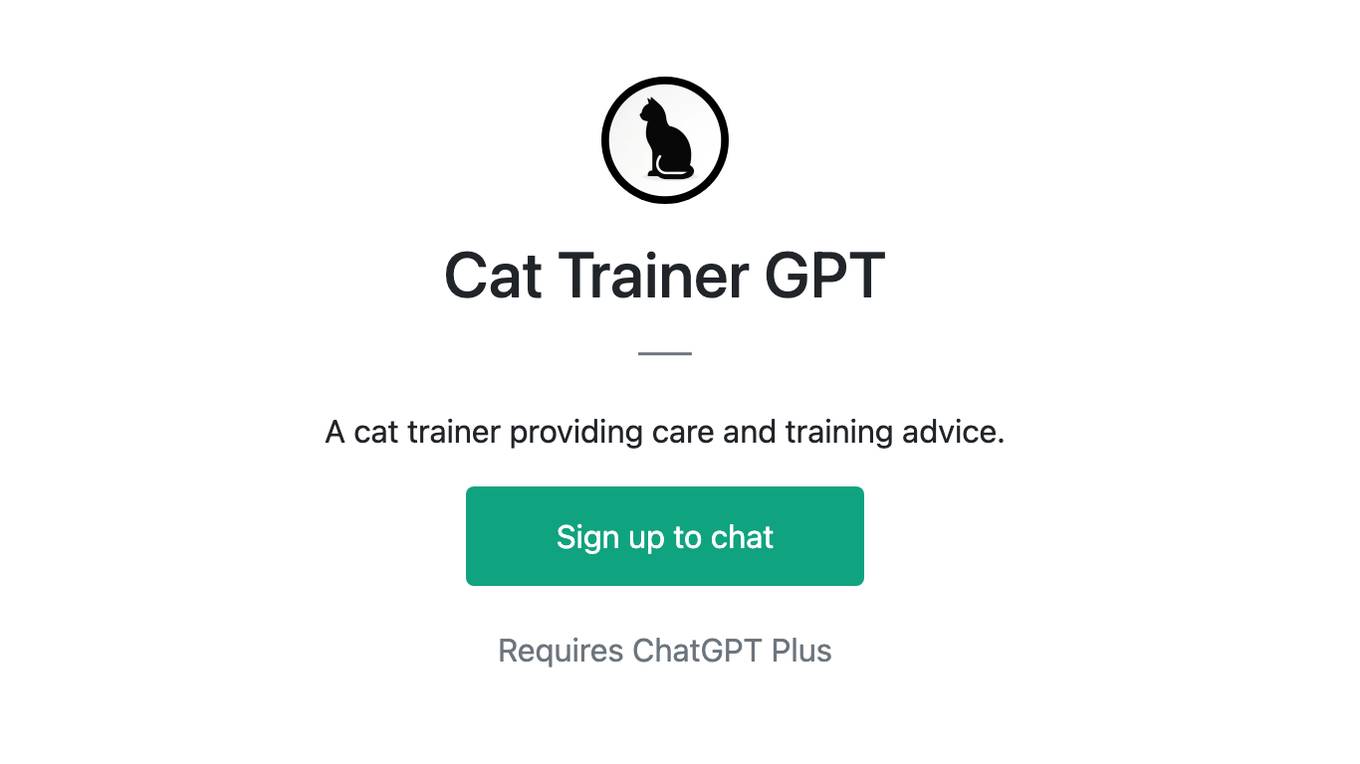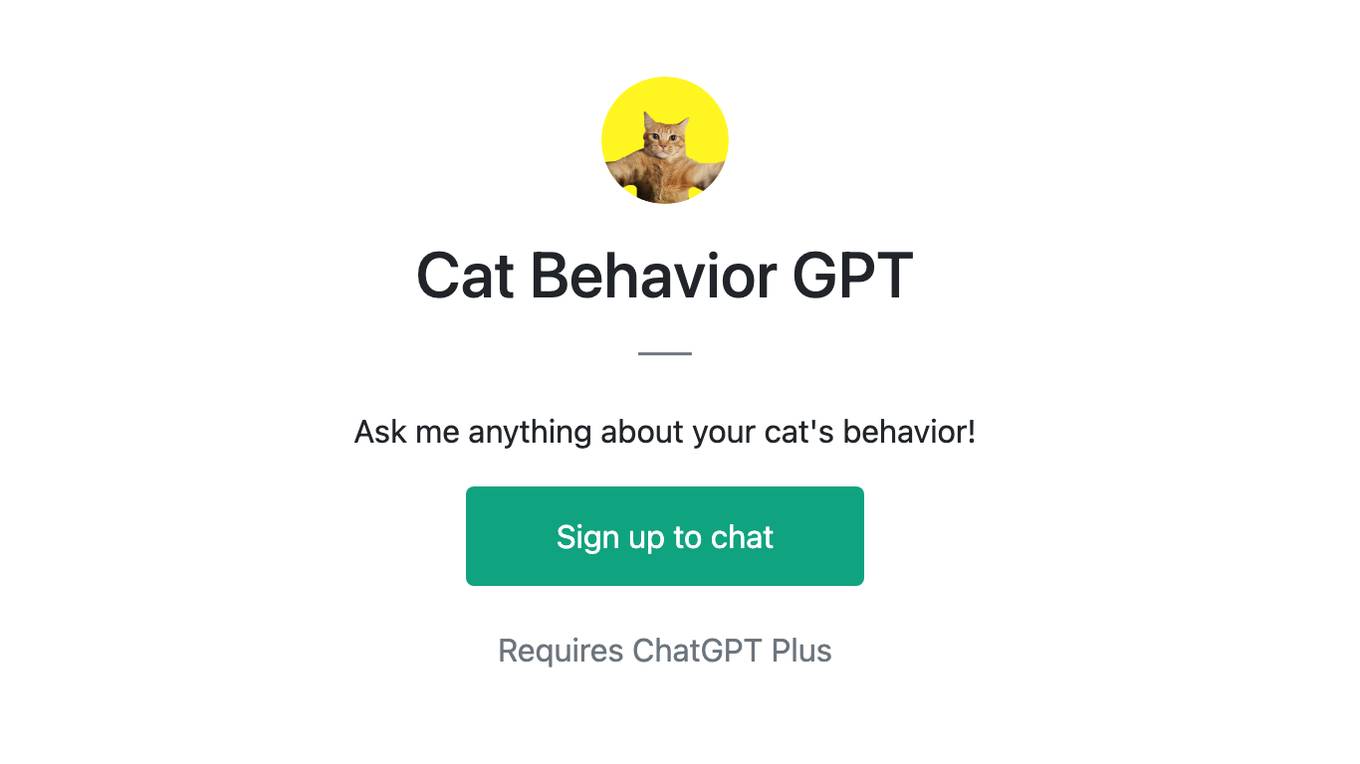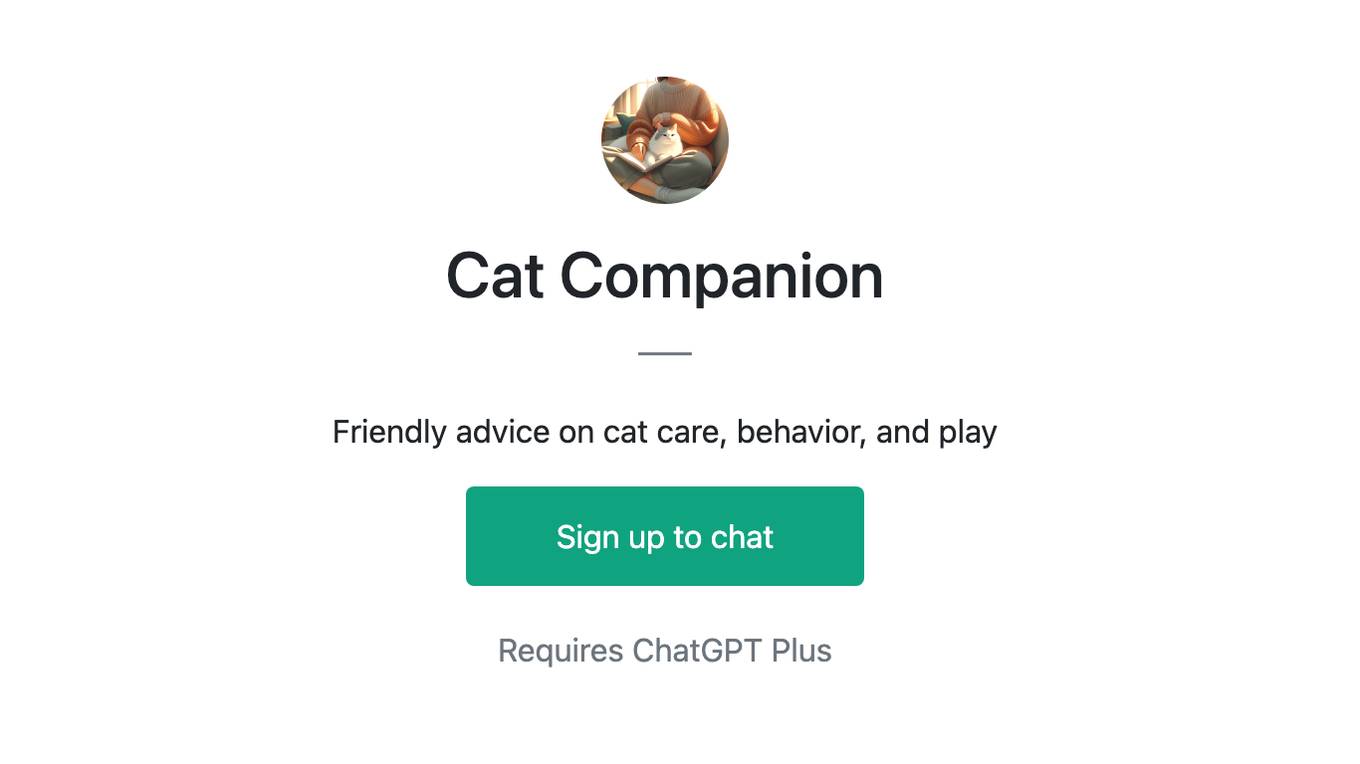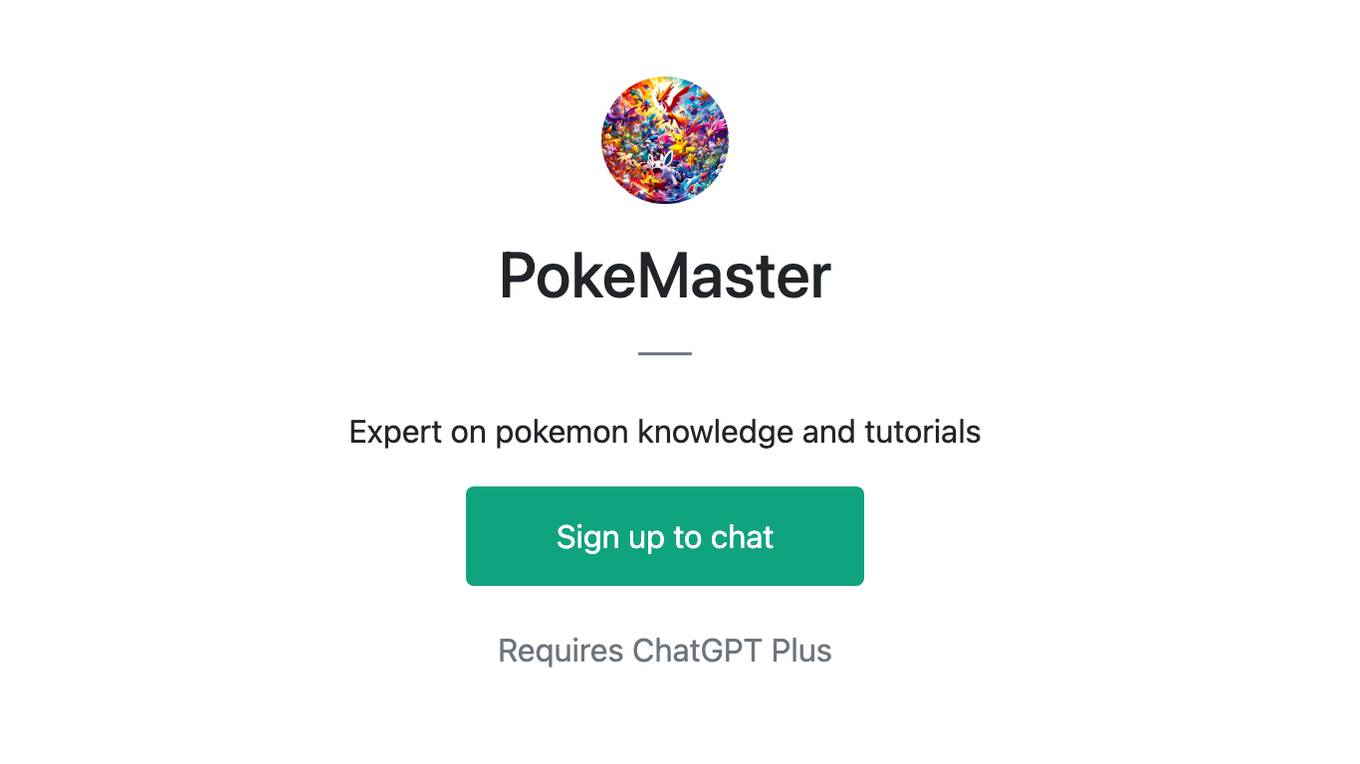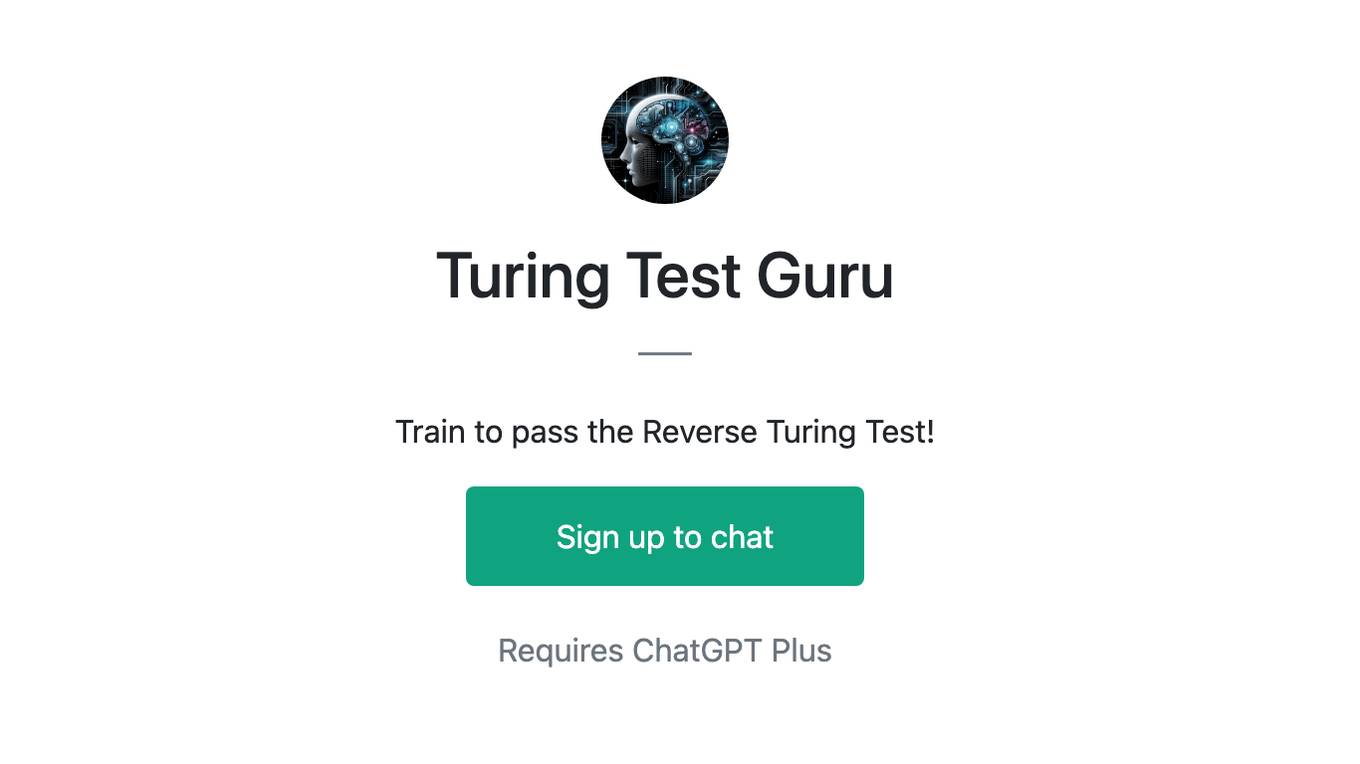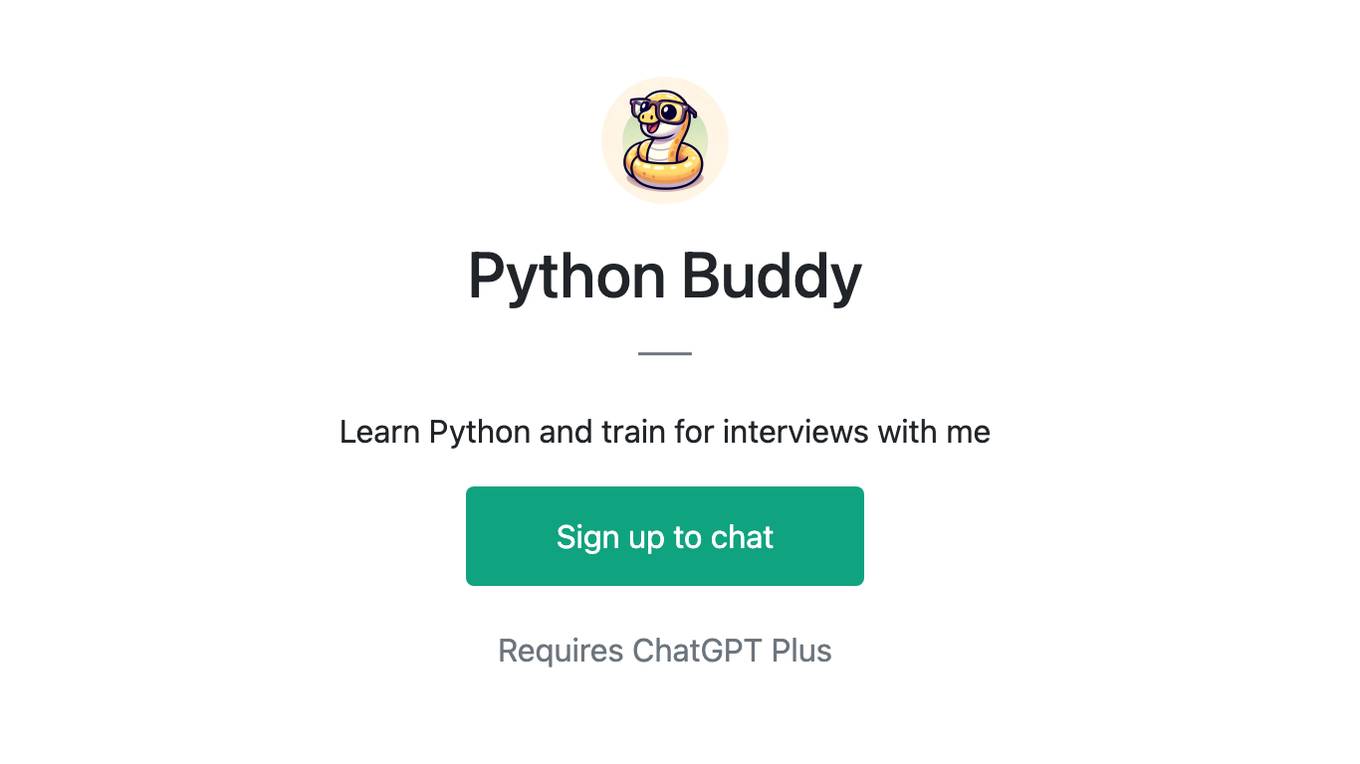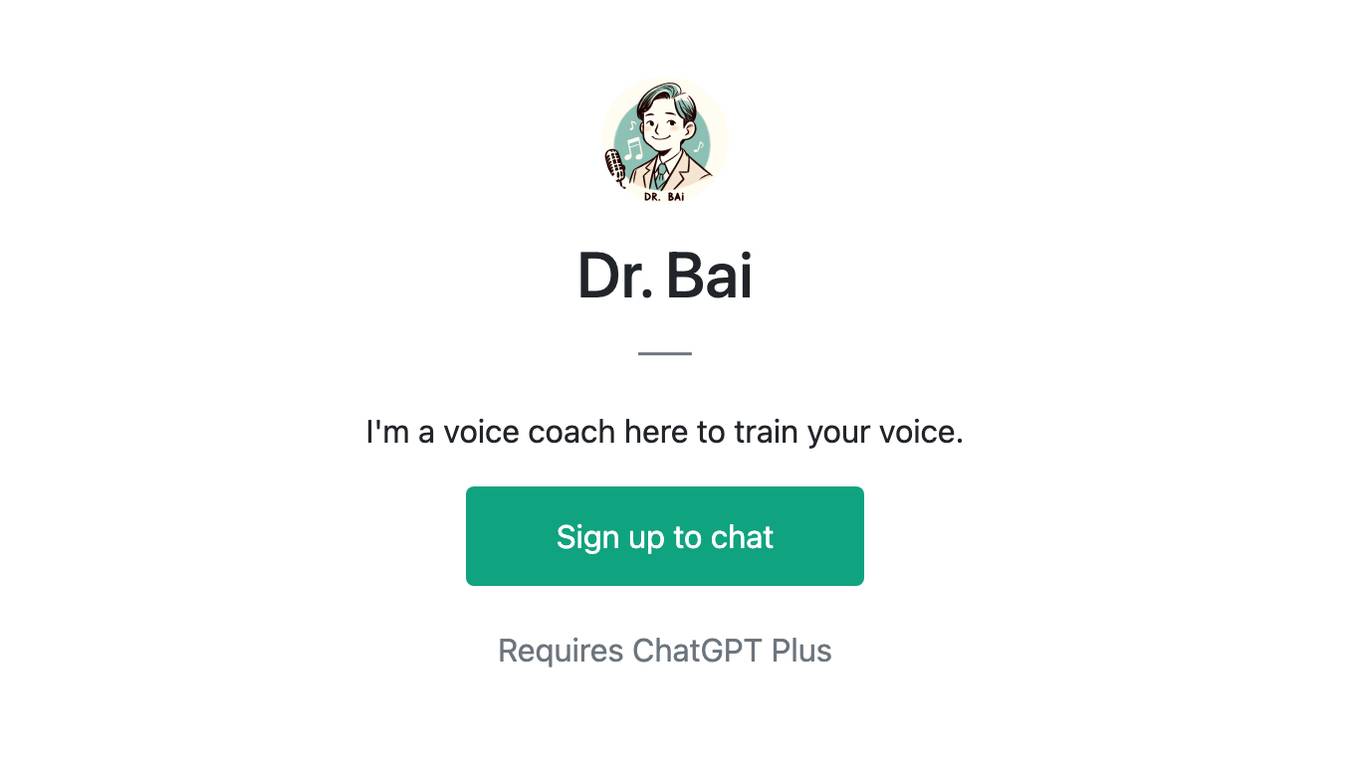Best AI tools for< Train Cat >
20 - AI tool Sites
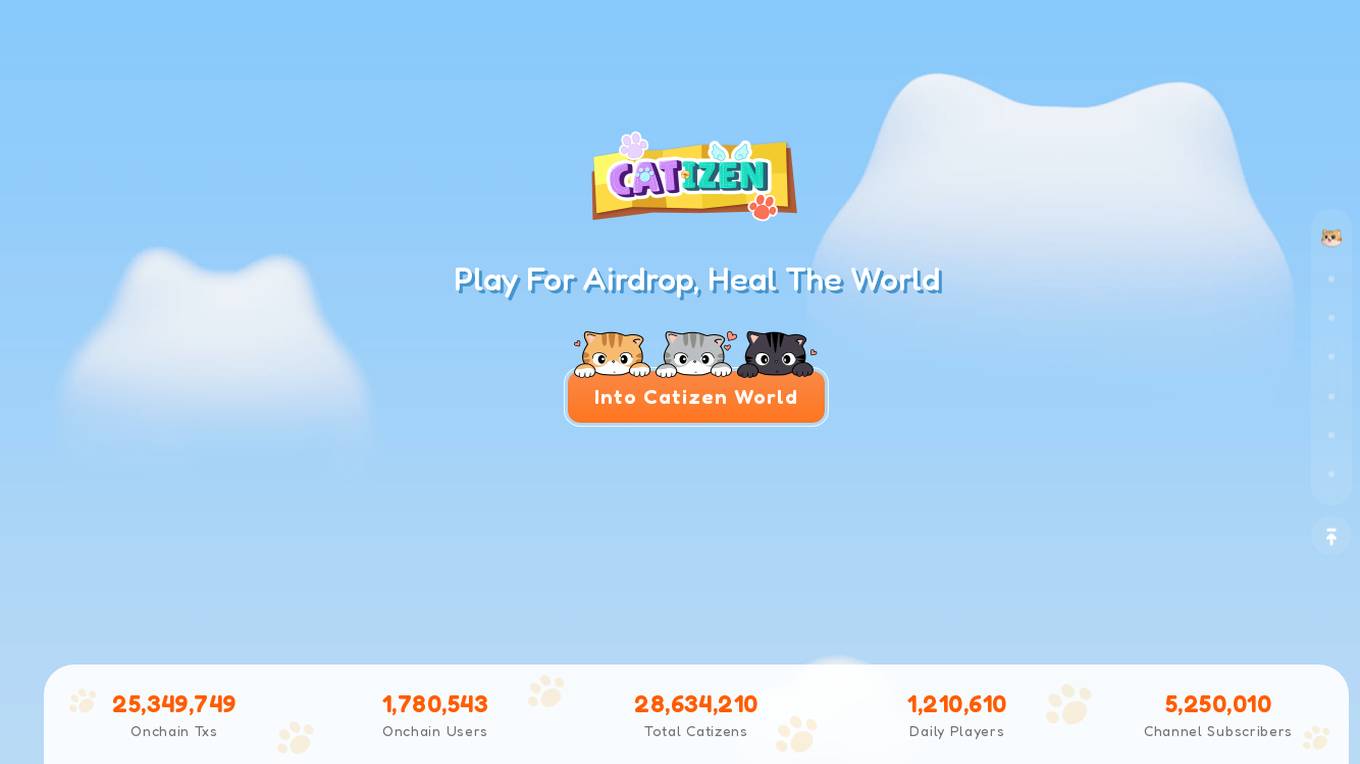
Catizen
Catizen is an AI-powered application that combines gaming, blockchain technology, and artificial intelligence to create a unique virtual world for users and their digital companions, AI kitties. With features like mini-games, user acquisition tasks, and blockchain-powered gaming, Catizen offers a fun and interactive experience for players. The application is designed to provide entertainment, user engagement, and rewards through a seamless integration of AI technology and gaming elements.
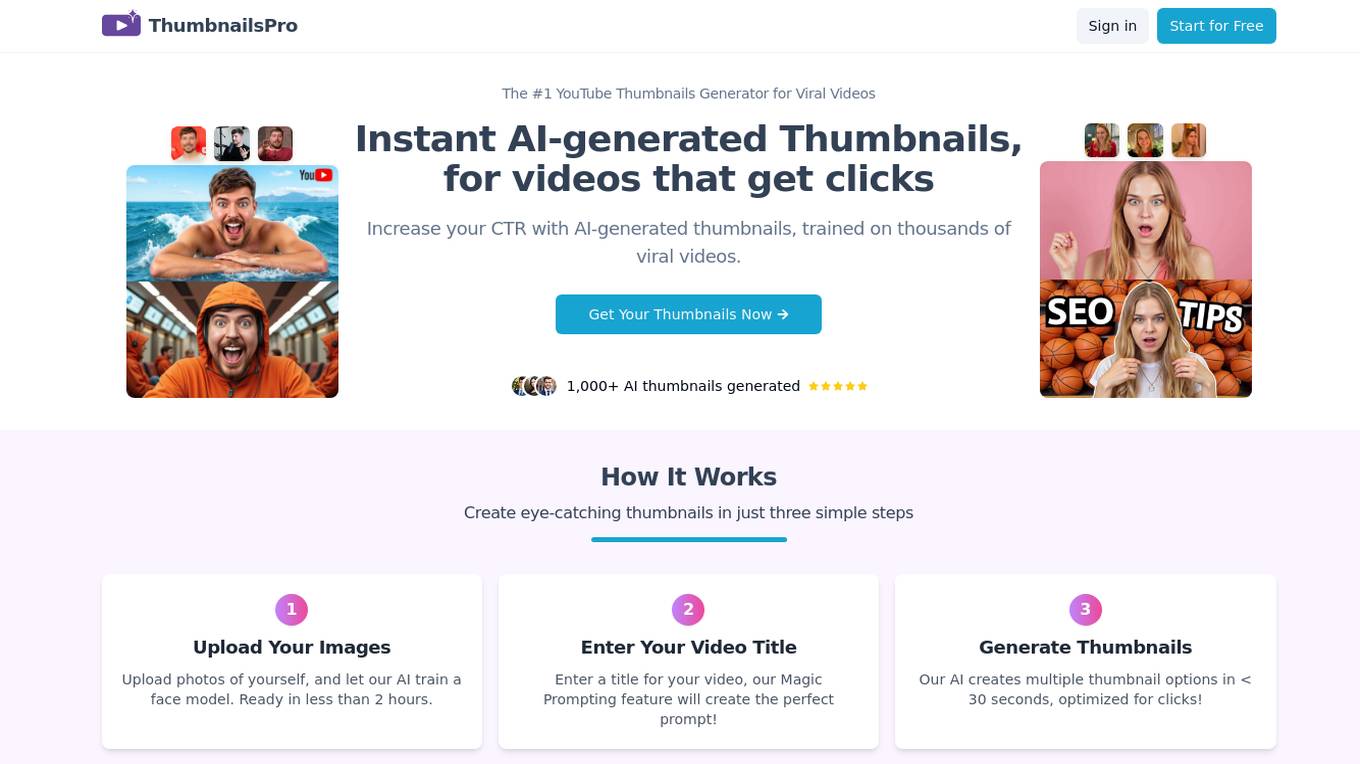
ThumbnailsPro
ThumbnailsPro is the #1 YouTube Thumbnails Generator for Viral Videos, offering instant AI-generated thumbnails to increase click-through rates. The AI is trained on thousands of viral videos to ensure optimized thumbnail creation. Users can upload images, enter video titles, and generate multiple thumbnail options in under 30 seconds. With affordable subscription plans, full ownership rights, and a user-friendly interface, ThumbnailsPro is designed for YouTube success.
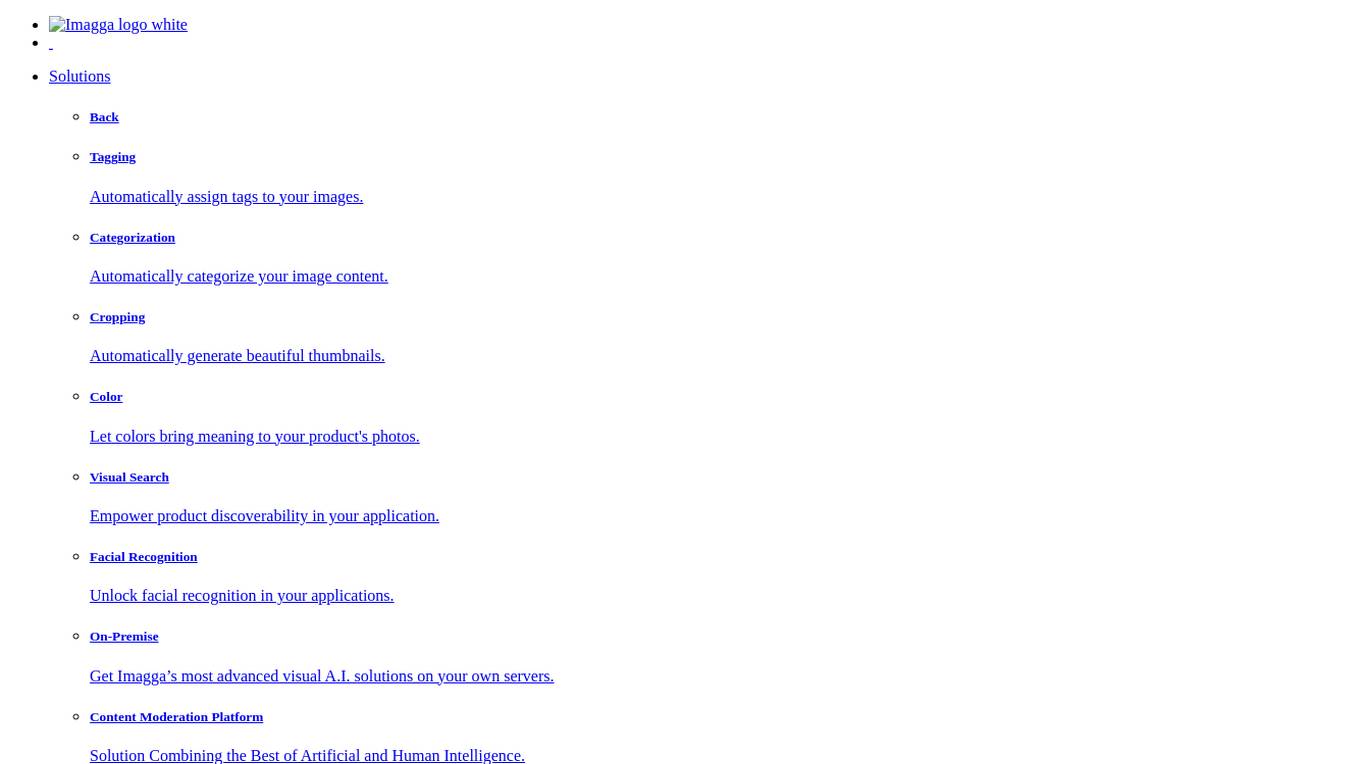
Imagga
Imagga is a leading provider of image recognition solutions for developers and businesses. Its API empowers intelligent apps with customizable machine learning technology. Imagga's solutions include tagging, categorization, cropping, color extraction, visual search, facial recognition, custom training, and content moderation. These solutions are used by over 30K startups, developers, and students, and trusted by over 200 business customers in more than 82 countries worldwide.
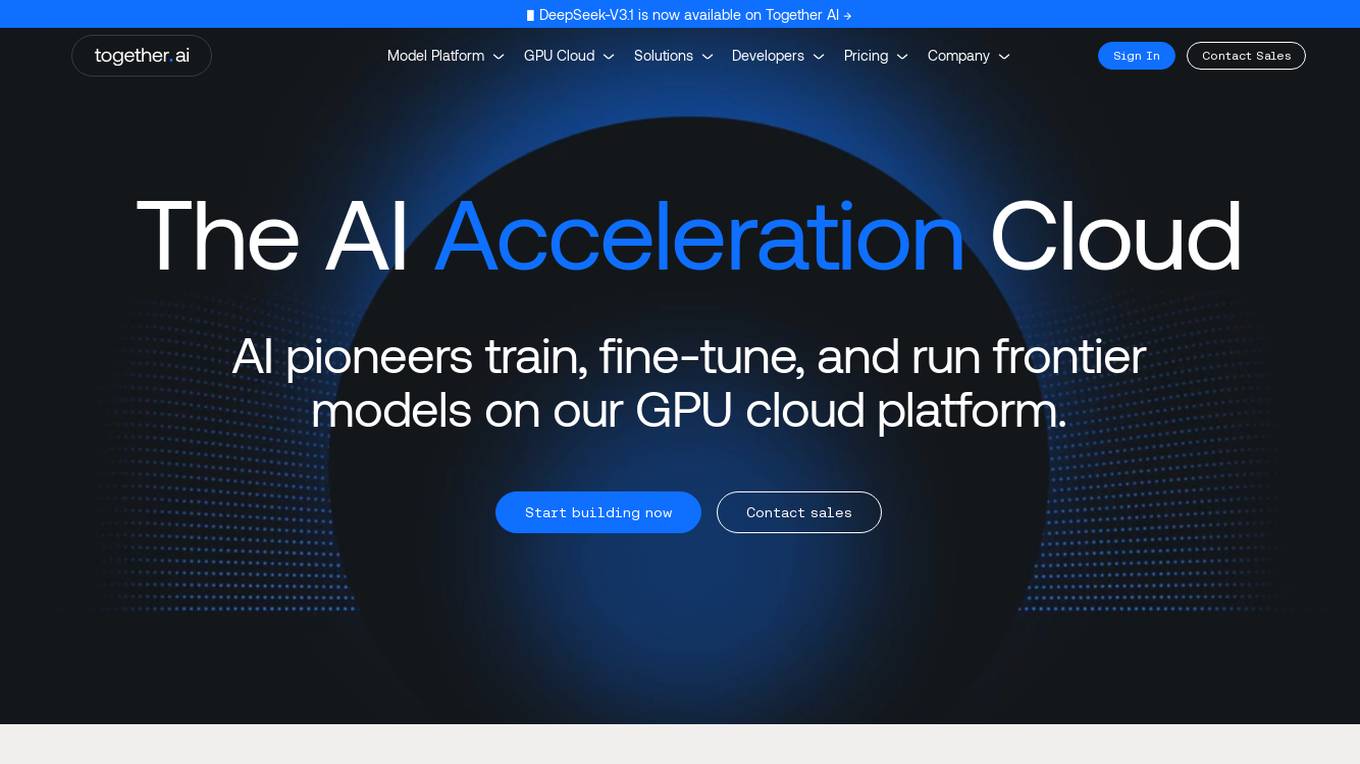
Together AI
Together AI is an AI Acceleration Cloud platform that offers fast inference, fine-tuning, and training services. It provides self-service NVIDIA GPUs, model deployment on custom hardware, AI chat app, code execution sandbox, and tools to find the right model for specific use cases. The platform also includes a model library with open-source models, documentation for developers, and resources for advancing open-source AI. Together AI enables users to leverage pre-trained models, fine-tune them, or build custom models from scratch, catering to various generative AI needs.
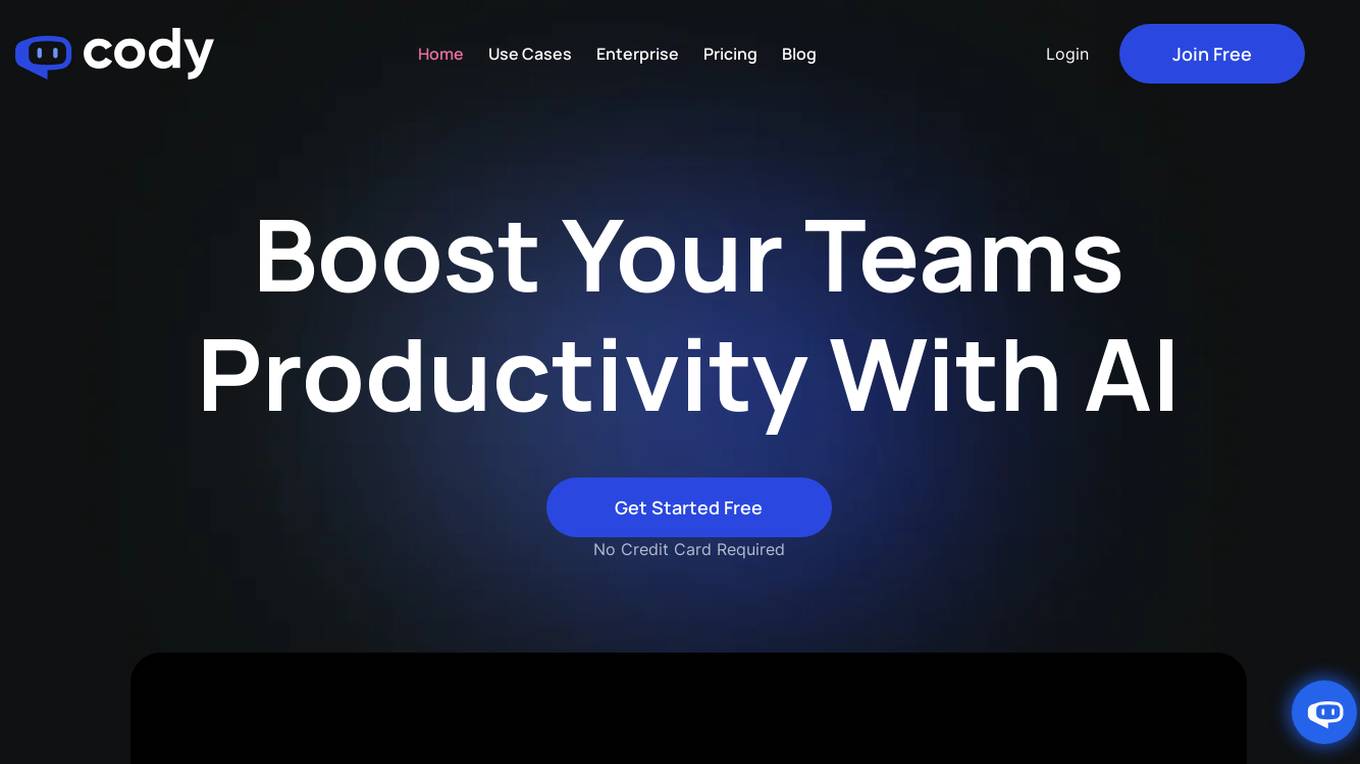
Cody
Cody is an intelligent AI assistant designed to boost team productivity by providing instant answers, support, troubleshooting, and idea generation. It can be trained on your business knowledge base to cater to your specific needs, making it a valuable asset for various departments such as marketing, HR, IT support, business consultancy, creative tasks, sales, training, hiring, customer support, and translation. Cody offers features like prompt manager, focus mode, conversation logs, scratchpad, and source checking, ensuring efficient and tailored assistance. With multilingual capabilities and customizable access controls, Cody prioritizes data security and user experience.
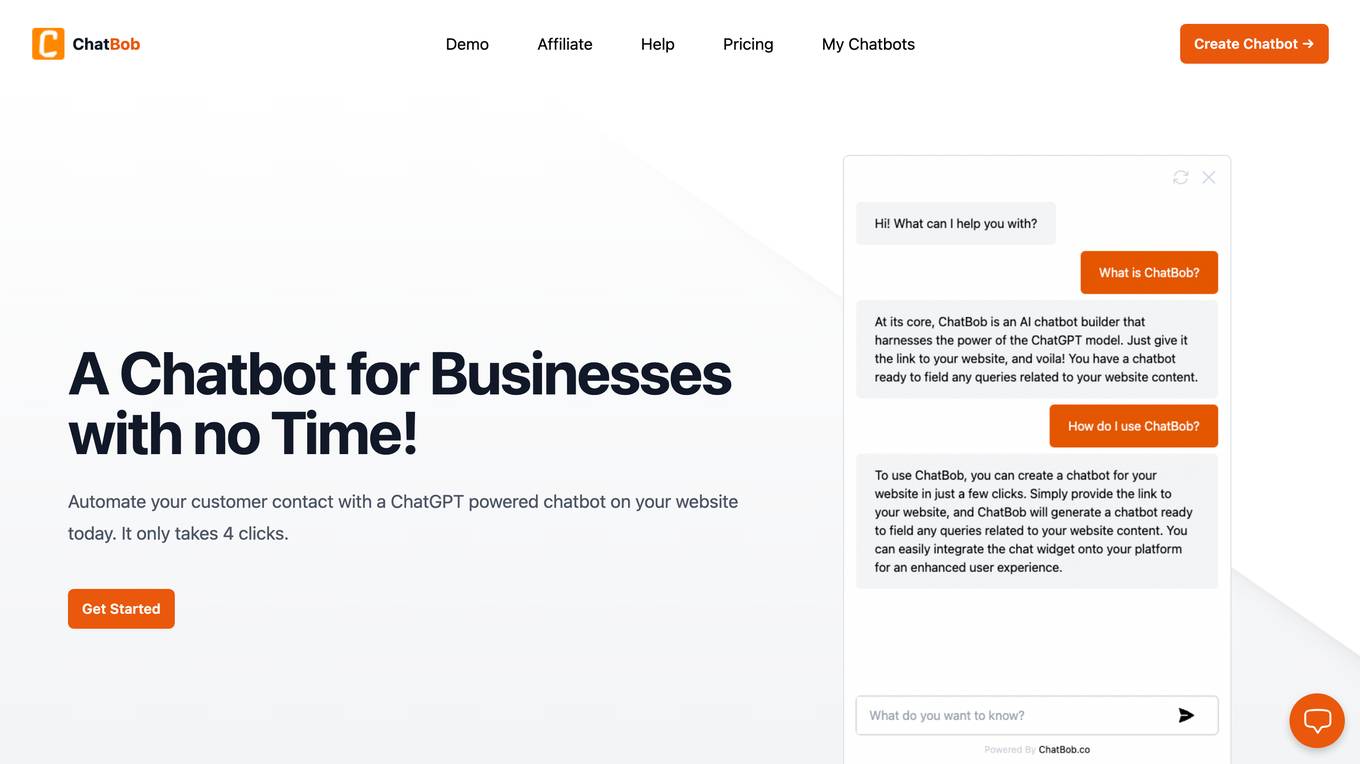
ChatBob
ChatBob is an AI-powered chatbot application designed for businesses to automate customer interactions on their websites. With just a few clicks, users can create a multilingual chatbot that can respond in over 95 languages, catering to a global audience. ChatBob helps businesses collect leads, customize chatbot settings, and remove branding. It offers different pricing plans to suit varying needs, from a free plan with limited features to premium plans with advanced functionalities.
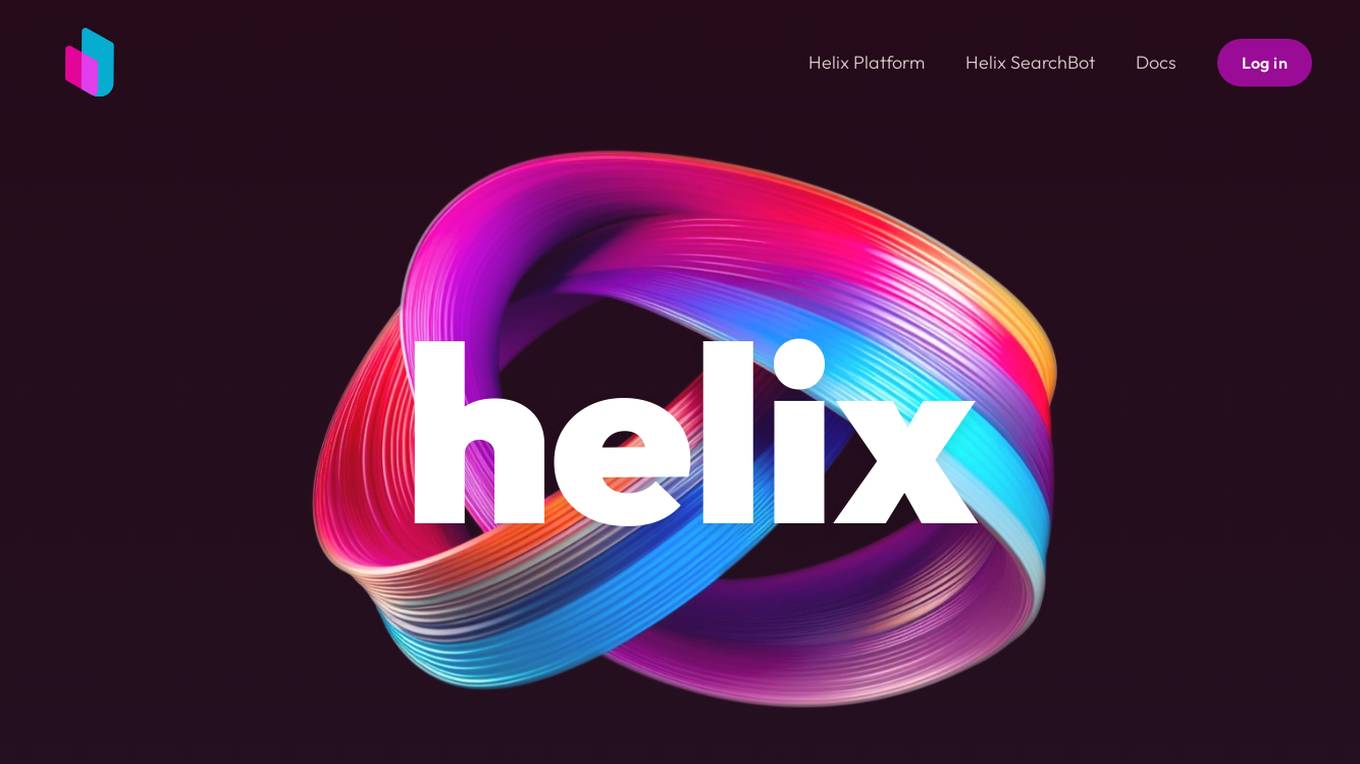
Helix AI
Helix AI is a private GenAI platform that enables users to build AI applications using open source models. The platform offers tools for RAG (Retrieval-Augmented Generation) and fine-tuning, allowing deployment on-premises or in a Virtual Private Cloud (VPC). Users can access curated models, utilize Helix API tools to connect internal and external APIs, embed Helix Assistants into websites/apps for chatbot functionality, write AI application logic in natural language, and benefit from the innovative RAG system for Q&A generation. Additionally, users can fine-tune models for domain-specific needs and deploy securely on Kubernetes or Docker in any cloud environment. Helix Cloud offers free and premium tiers with GPU priority, catering to individuals, students, educators, and companies of varying sizes.
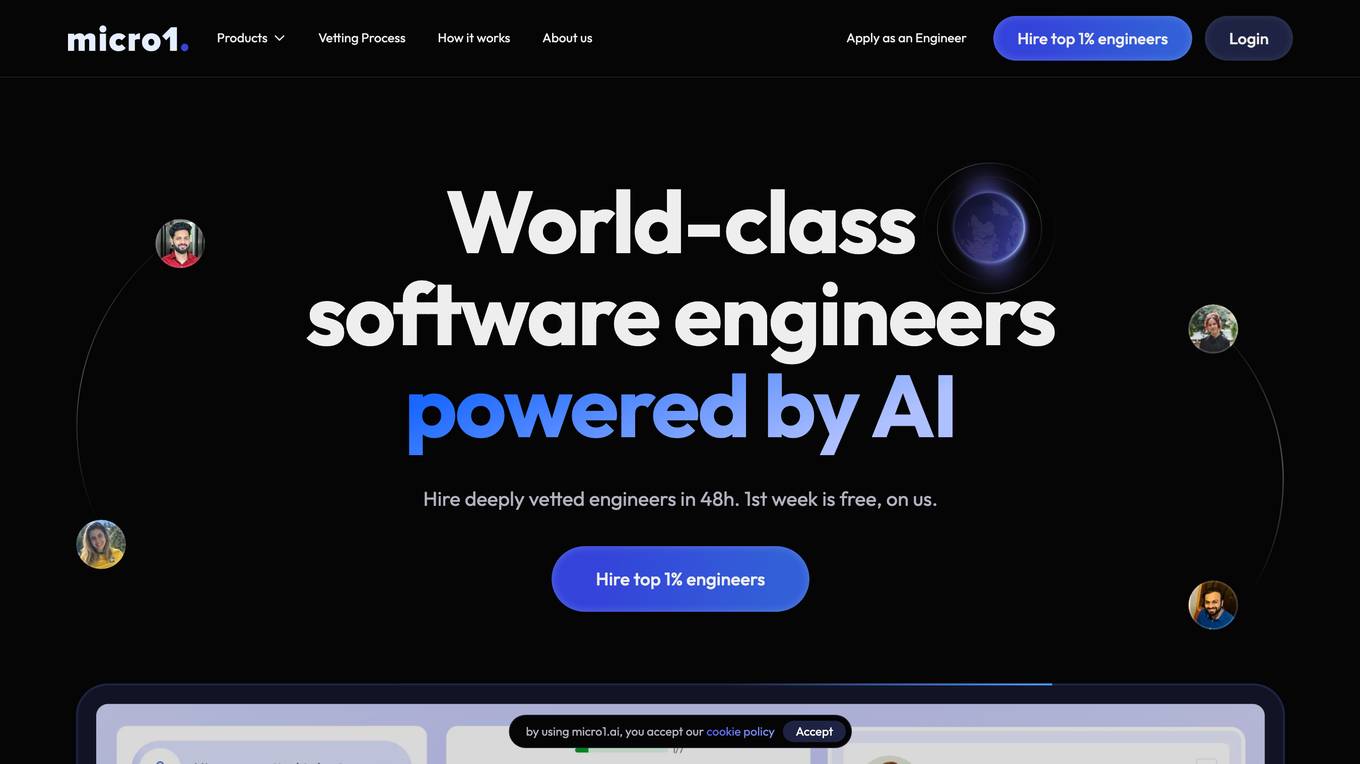
micro1
micro1 is an AI recruitment engine designed to hire top global talent efficiently. It utilizes human data produced by subject matter experts to provide end-to-end post-training services. The platform offers a Zara AI recruiter agent to identify and hire the best talent on earth, catering to various industries such as tech startups, staffing agencies, and enterprises. With features like sourcing and vetting candidates, seamless onboarding, and high-quality data training, micro1 aims to streamline the recruitment process and save time and costs for businesses. The platform also provides resources for companies and talent, including case studies, cost savings calculators, and interview preparation tools.
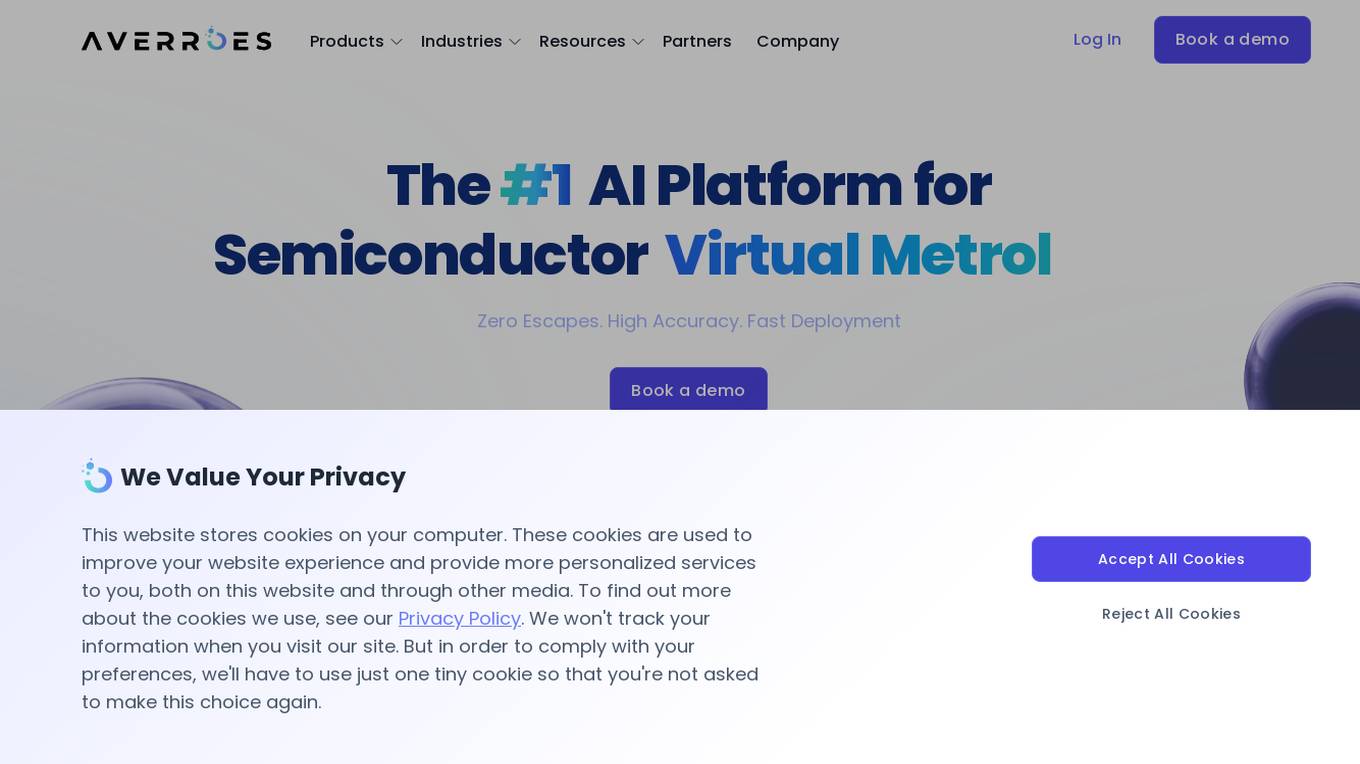
Averroes
Averroes is the #1 AI Automated Visual Inspection Software designed for various industries such as Oil and Gas, Food and Beverage, Pharma, Semiconductor, and Electronics. It offers an end-to-end AI visual inspection platform that allows users to effortlessly train and deploy custom AI models for defect classification, object detection, and segmentation. Averroes provides advanced solutions for quality assurance, including automated defect classification, submicron defect detection, defect segmentation, defect review, and defect monitoring. The platform ensures labeling consistency, offers flexible deployment options, and has shown remarkable improvements in defect detection and productivity for semiconductor OEMs.
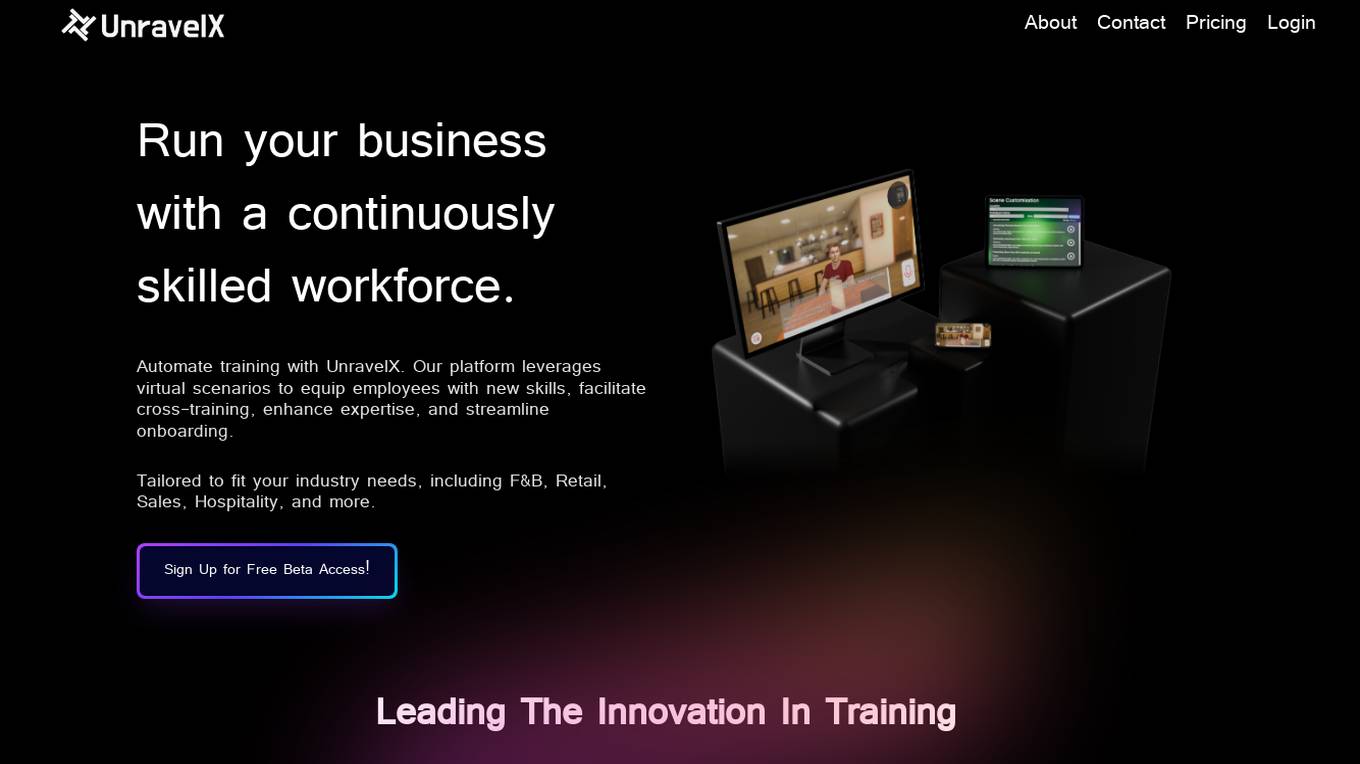
UnravelX
UnravelX is an AI-powered platform that transforms documents into 3D interactive virtual scenarios for training purposes. It automates training processes by using generative AI to create immersive learning experiences. The platform caters to various industries such as F&B, Retail, Sales, and Hospitality, offering a cost-effective and efficient solution for upskilling employees. With over 60 years of combined AI and training expertise, UnravelX leads the innovation in scenario-based learning, providing a seamless onboarding experience for organizations.
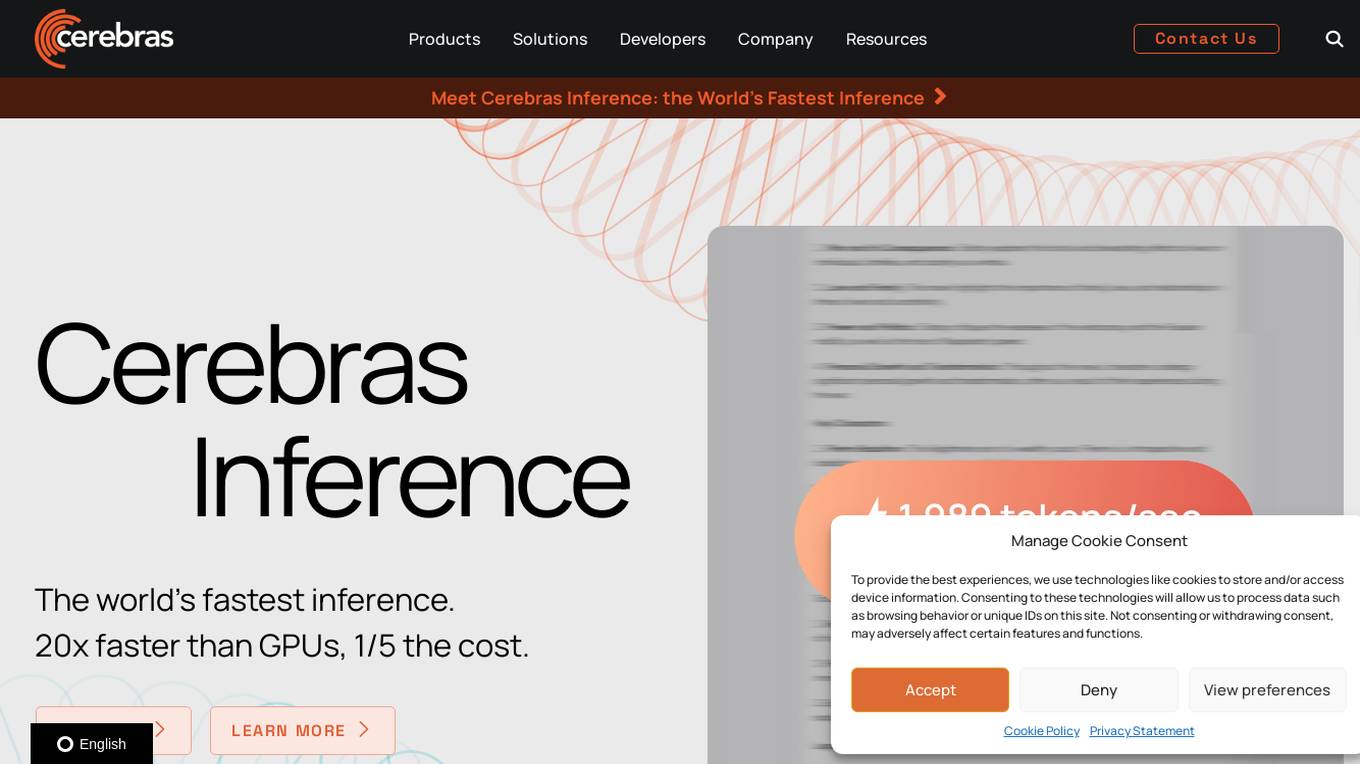
Cerebras
Cerebras is an AI tool that offers products and services related to AI supercomputers, cloud system processors, and applications for various industries. It provides high-performance computing solutions, including large language models, and caters to sectors such as health, energy, government, scientific computing, and financial services. Cerebras specializes in AI model services, offering state-of-the-art models and training services for tasks like multi-lingual chatbots and DNA sequence prediction. The platform also features the Cerebras Model Zoo, an open-source repository of AI models for developers and researchers.
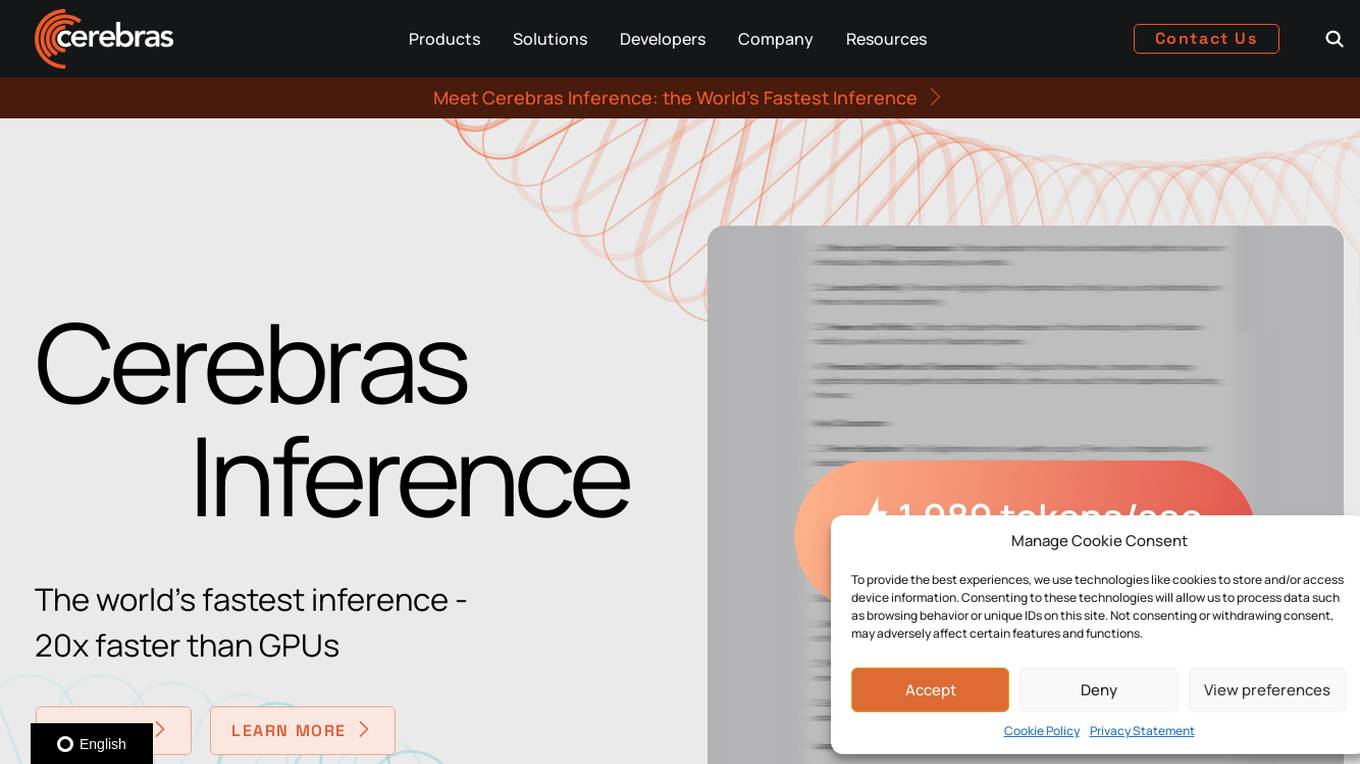
Cerebras
Cerebras is a leading AI tool and application provider that offers cutting-edge AI supercomputers, model services, and cloud solutions for various industries. The platform specializes in high-performance computing, large language models, and AI model training, catering to sectors such as health, energy, government, and financial services. Cerebras empowers developers and researchers with access to advanced AI models, open-source resources, and innovative hardware and software development kits.
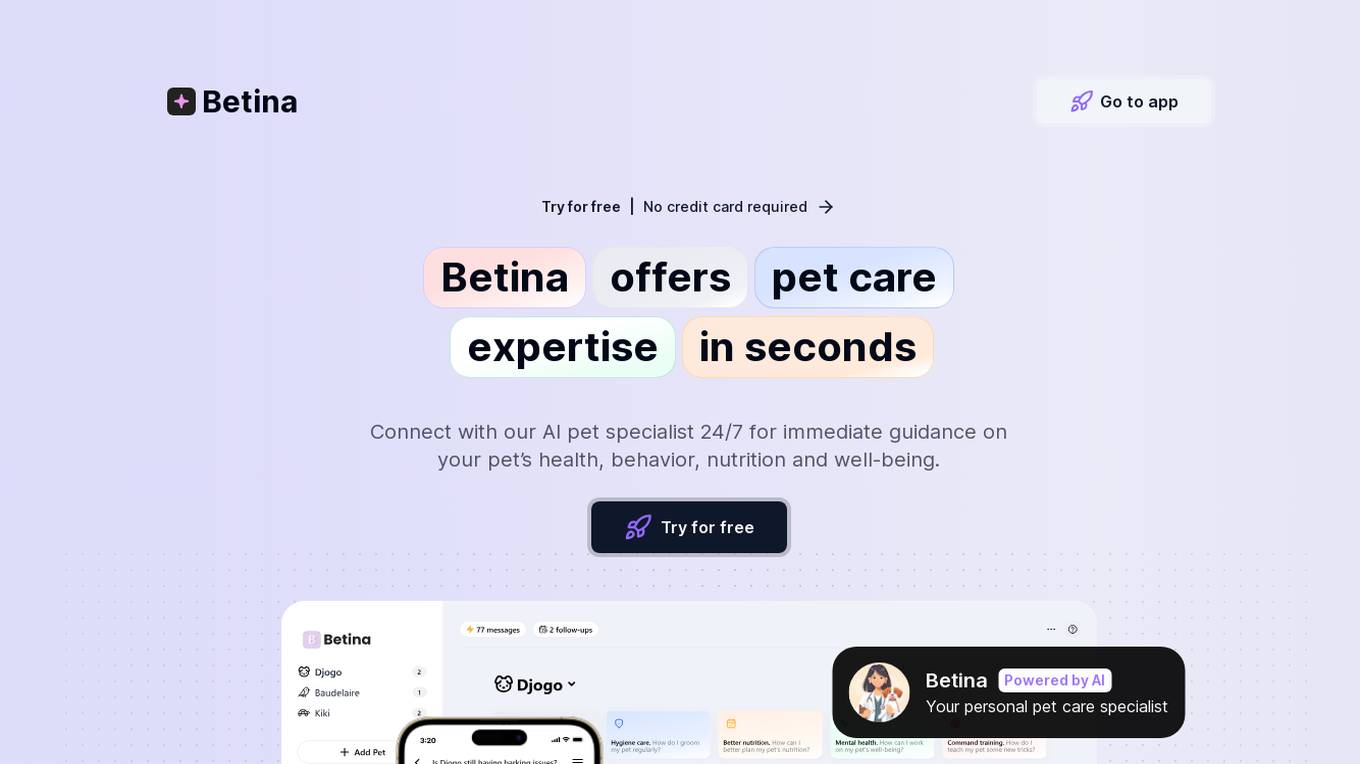
Betina
Betina is an AI-powered pet care specialist application that offers expert advice 24/7. It provides immediate guidance on pet health, behavior, nutrition, and well-being. With features like tailored pet training plans, instant pet care, pet insights, and personalized advice, Betina aims to cater to all pet owners' needs. Users can create a profile for their pets, ask questions, and discuss with Betina for specialized diagnosis and care. The application is designed to be more convenient, tailored, and available than traditional pet care resources.
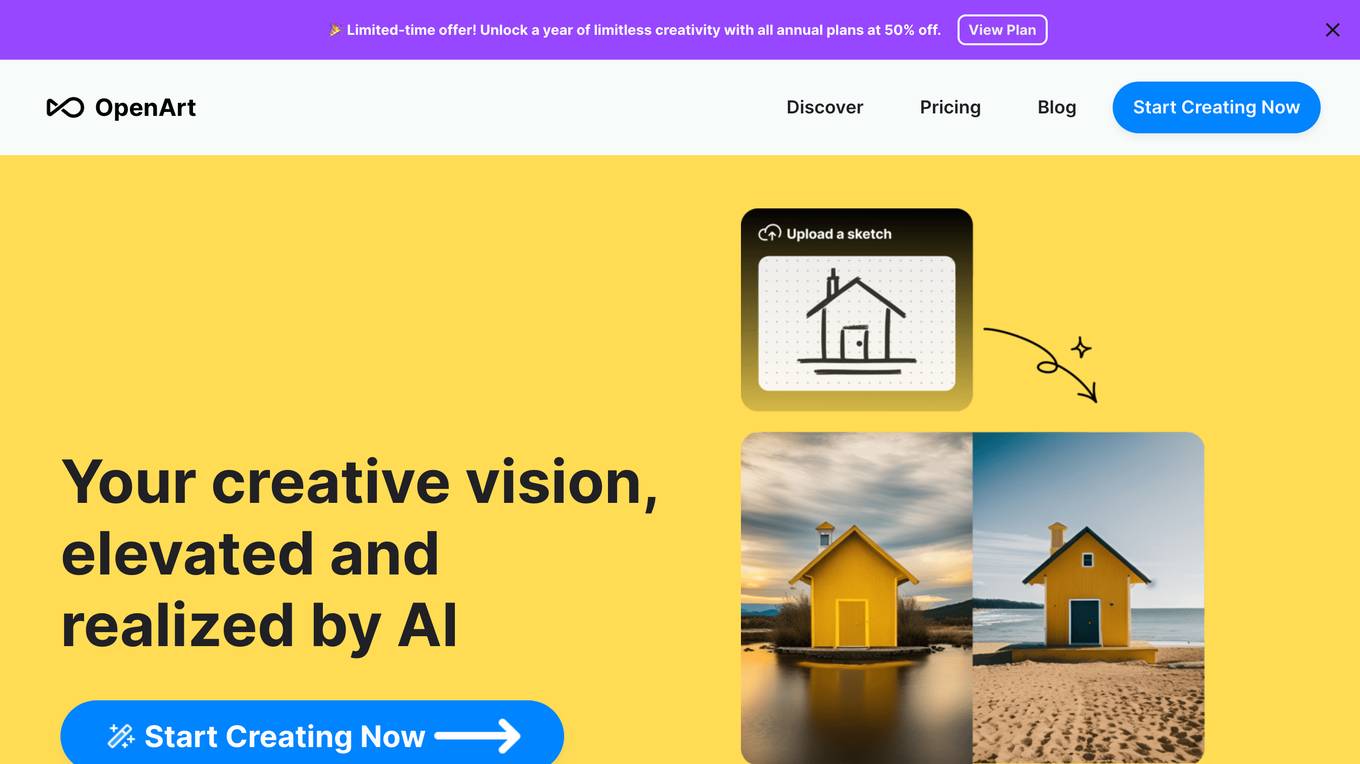
OpenArt
OpenArt is an AI-powered art platform that offers a free AI image generator and editor. It allows users to create images using pre-built models or by training their own models. The platform provides an intuitive AI drawing tool and editing suite to transform artistic concepts into reality. OpenArt stands out for its boundary-free AI drawing, advanced AI art tools, diverse artistic styles, and the ability to train custom AI models. It caters to both amateur and professional artists, offering high-quality art creation and comprehensive support. Users can experiment with various styles, receive detailed feedback, and collaborate on artistic projects through the platform.
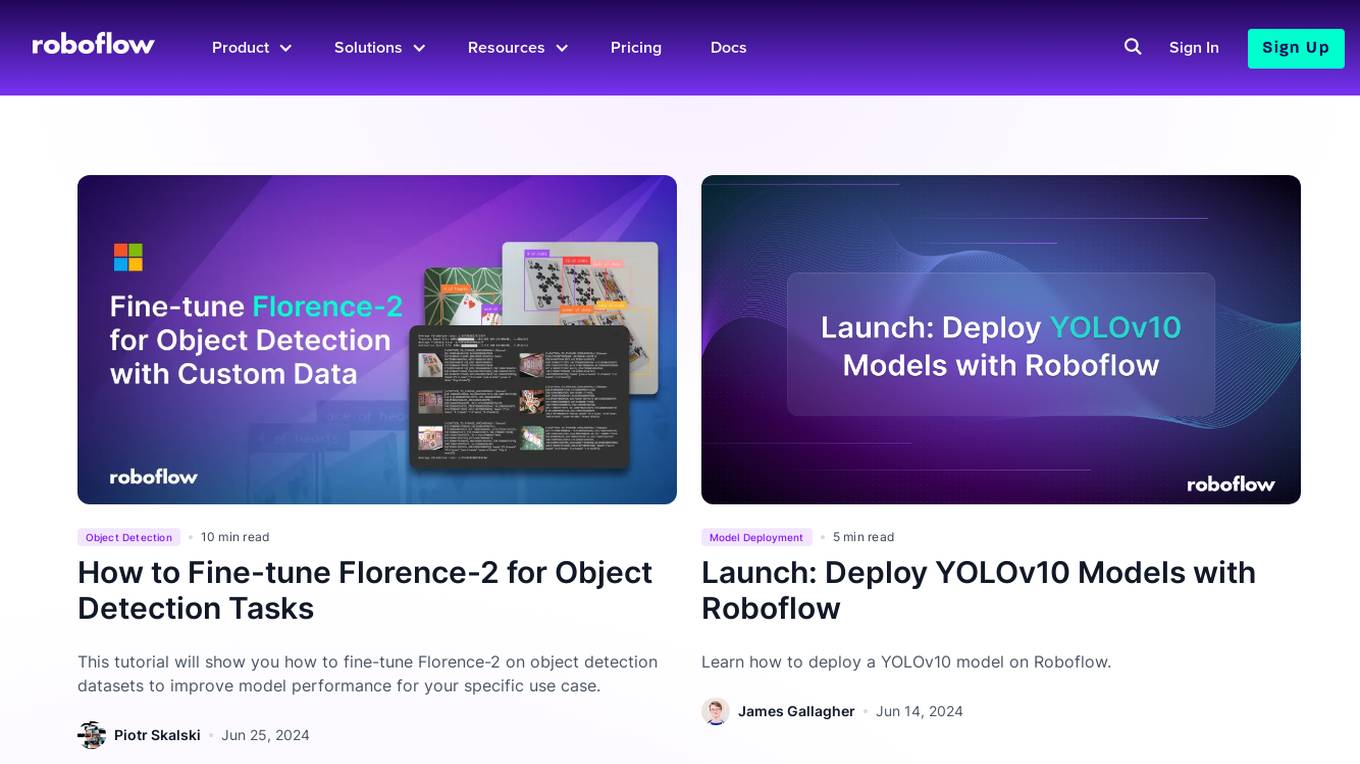
Roboflow
Roboflow is an AI tool designed for computer vision tasks, offering a platform that allows users to annotate, train, deploy, and perform inference on models. It provides integrations, ecosystem support, and features like notebooks, autodistillation, and supervision. Roboflow caters to various industries such as aerospace, agriculture, healthcare, finance, and more, with a focus on simplifying the development and deployment of computer vision models.
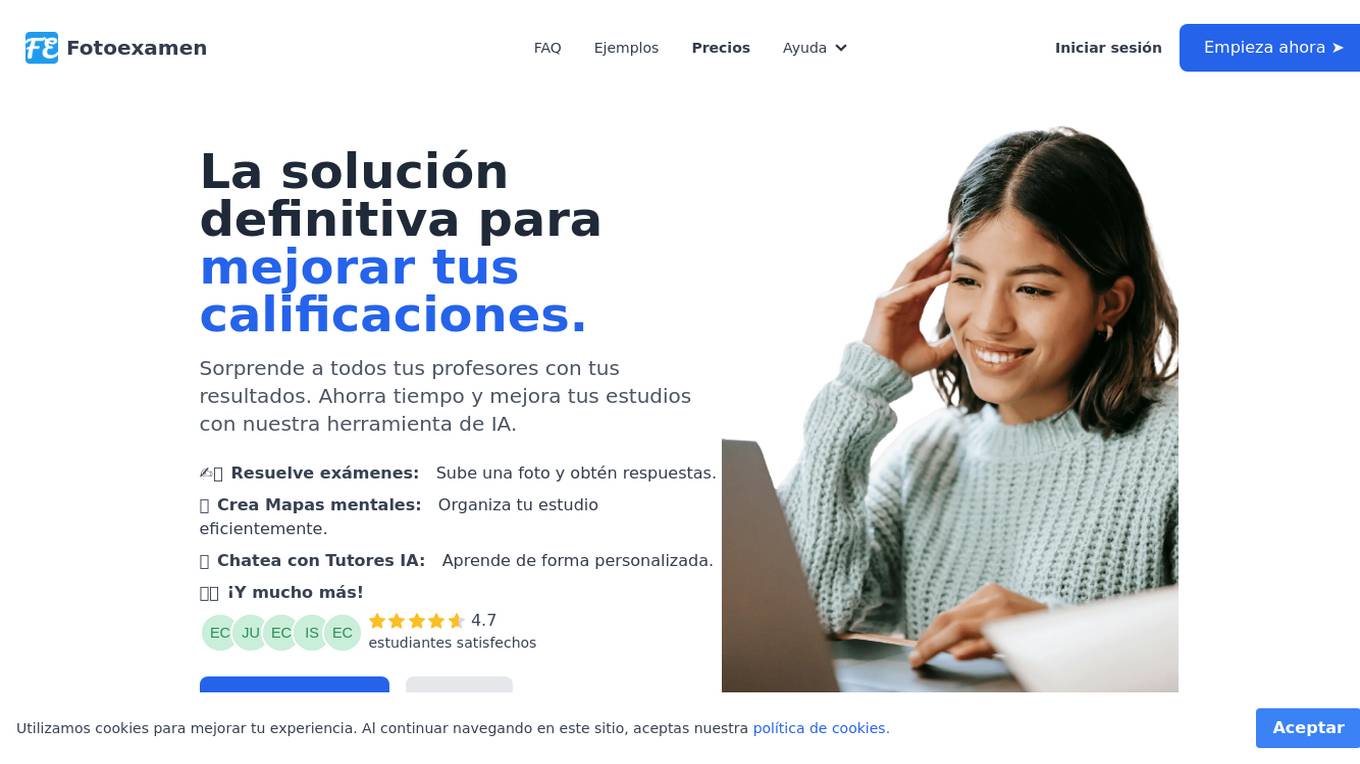
FotoExamen
FotoExamen is an AI-powered platform designed to help students solve exams and tasks quickly and accurately by uploading a photo. It offers features such as resolving exams with AI, creating mind maps, chatting with AI tutors, and more. FotoExamen provides personalized tools and visual aids to enhance the study experience, catering to students, teachers, educational institutions, parents, tutors, and researchers. The platform ensures data security, multilingual support, 24/7 availability, and secure payment processing. FotoExamen stands out from competitors like ChatGPT by offering specialized AI for exam analysis, image recognition, competitive pricing, and additional learning tools.
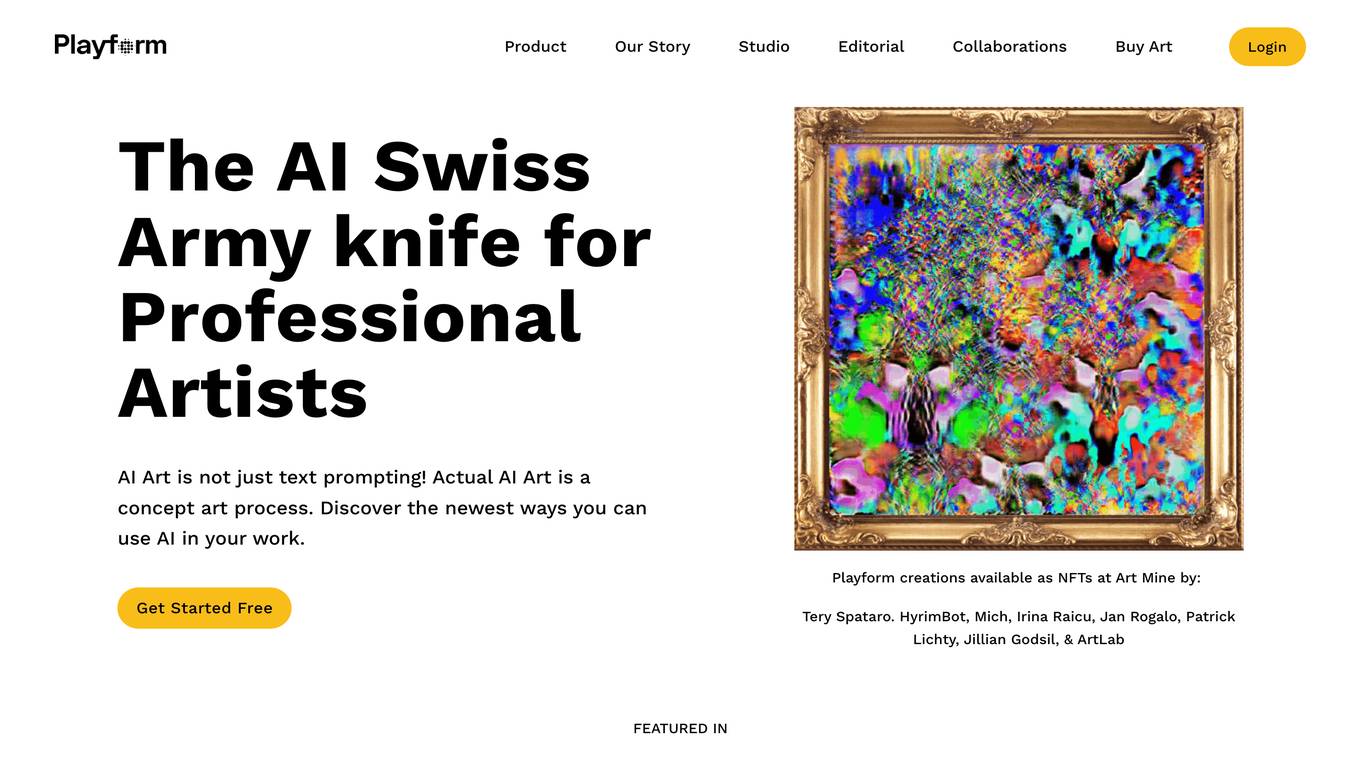
Playform
Playform is an AI art generator platform that offers a suite of AI tools for artists, creators, and curious minds. It provides intuitive tools for sketching, face swapping, image generation, and model training. Playform allows users to create visual art in various styles and scales, all while ensuring privacy and creative control. The platform caters to professional artists, content creators, and casual users looking to explore visual AI without prompt fatigue.
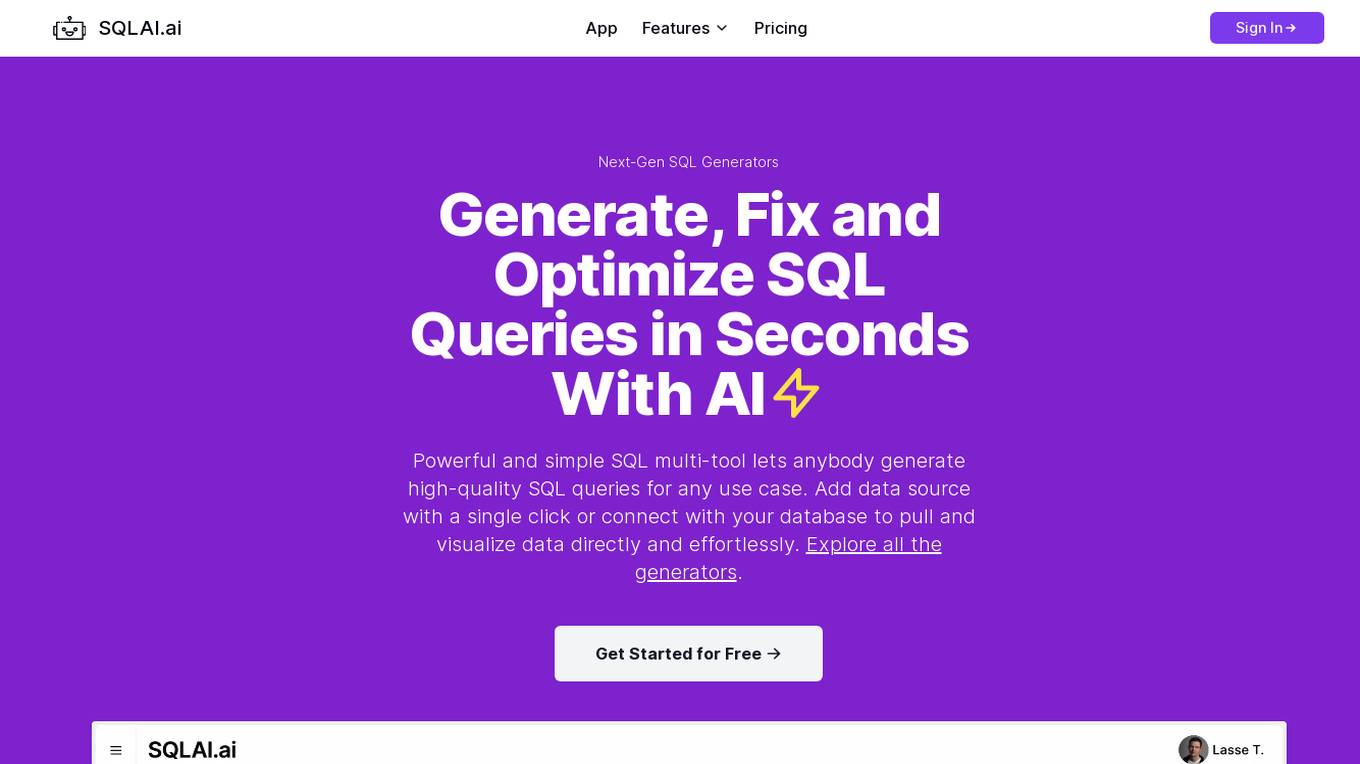
SQLAI.ai
SQLAI.ai is a professional SQL multi-tool that leverages AI technology to generate, fix, explain, and optimize SQL queries and databases. It enables users to interact with SQL using everyday language, effortlessly train AI to understand database schemas, and benefit from AI-driven recommendations for query optimization. The platform caters to a wide range of users, from beginners to experts, by simplifying SQL tasks and providing valuable insights for database management. With features like generating SQL data, data analytics, and real-time data insights, SQLAI.ai revolutionizes the way users interact with databases, making SQL tasks simpler, more efficient, and accessible to all.
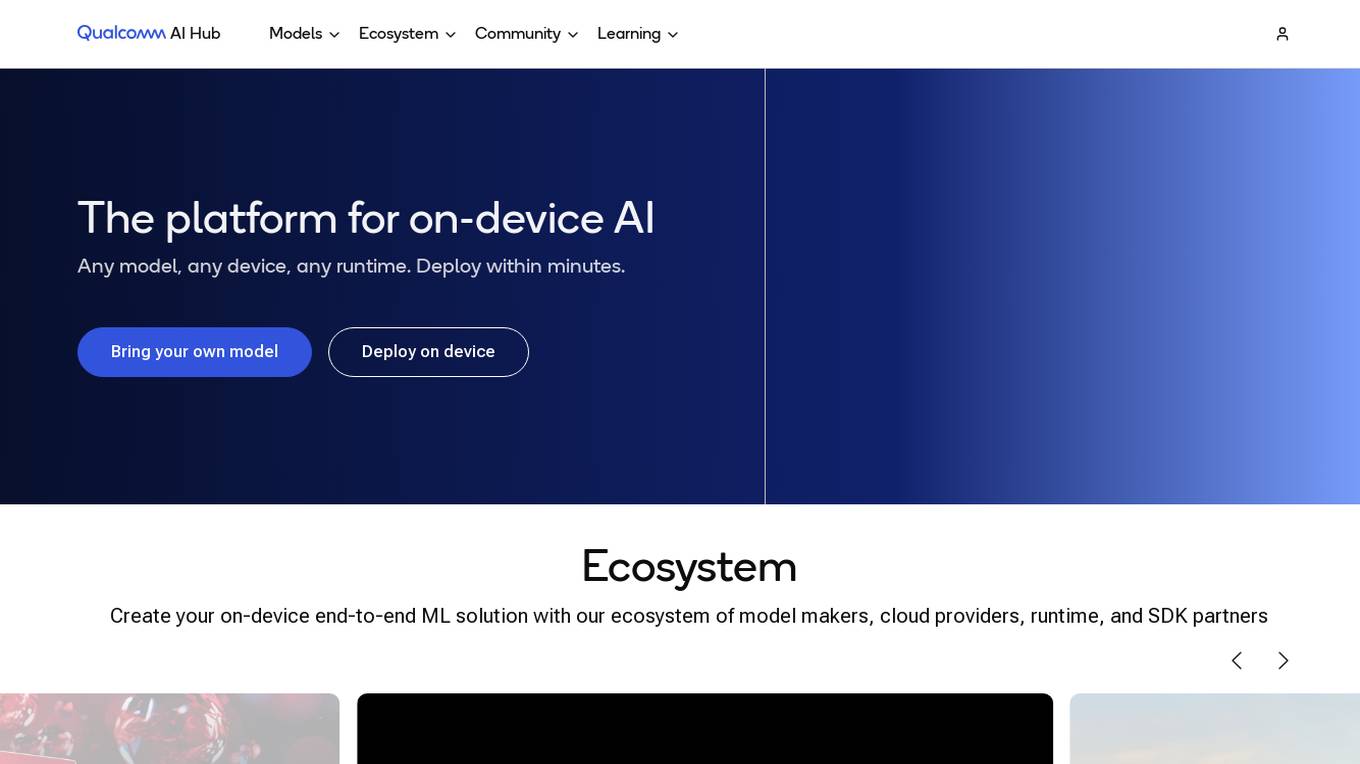
Qualcomm AI Hub
Qualcomm AI Hub is a platform that allows users to run AI models on Snapdragon® 8 Elite devices. It provides a collaborative ecosystem for model makers, cloud providers, runtime, and SDK partners to deploy on-device AI solutions quickly and efficiently. Users can bring their own models, optimize for deployment, and access a variety of AI services and resources. The platform caters to various industries such as mobile, automotive, and IoT, offering a range of models and services for edge computing.
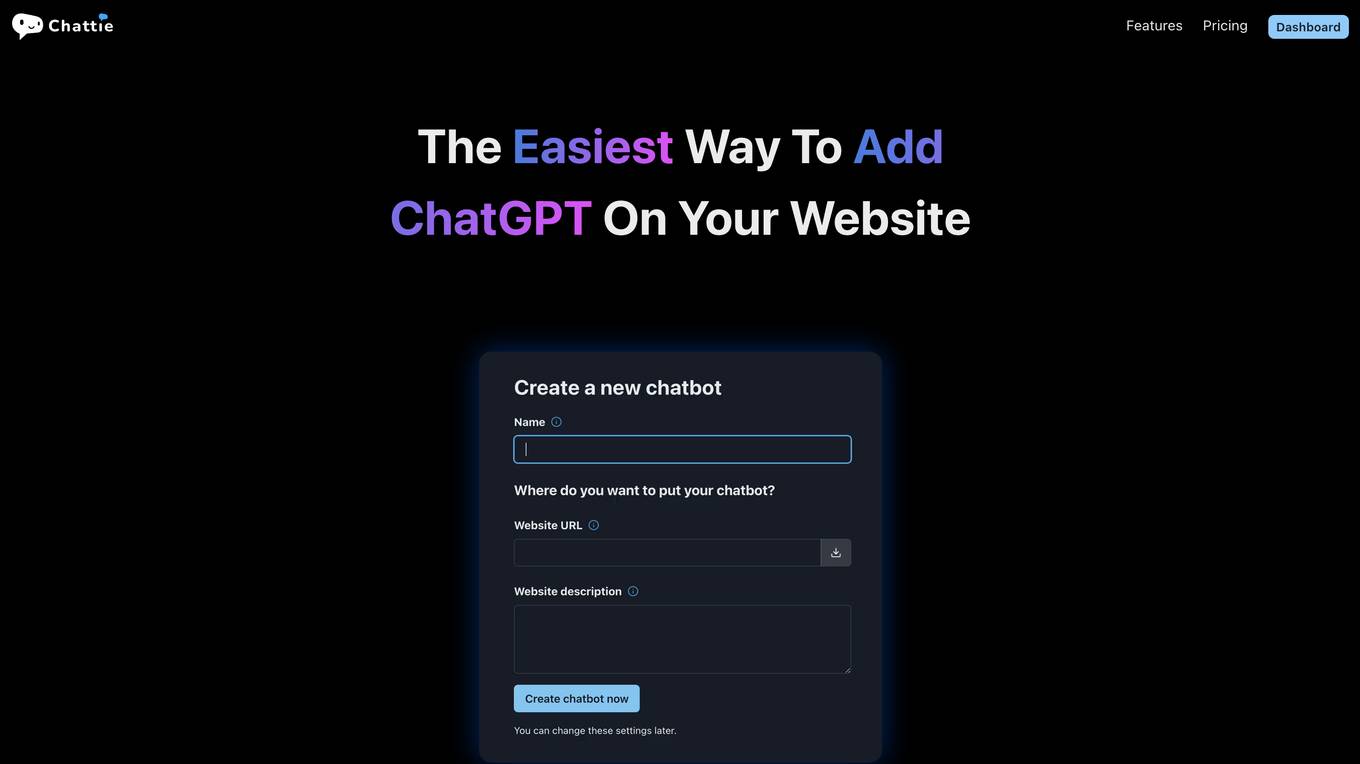
Chattie
Chattie is an AI-powered chatbot platform that allows users to easily integrate ChatGPT on their websites. It offers features such as training chatbots with various data sources, theme customization with CSS support, and detailed stats and analytics. Chattie provides different pricing plans to cater to different user needs, from individual users to agencies. With Chattie, users can create and customize chatbots to engage with website visitors effectively.
0 - Open Source AI Tools
20 - OpenAI Gpts

How to Train Your Dog (or Cat, or Dragon, or...)
Expert in pet training advice, friendly and engaging.
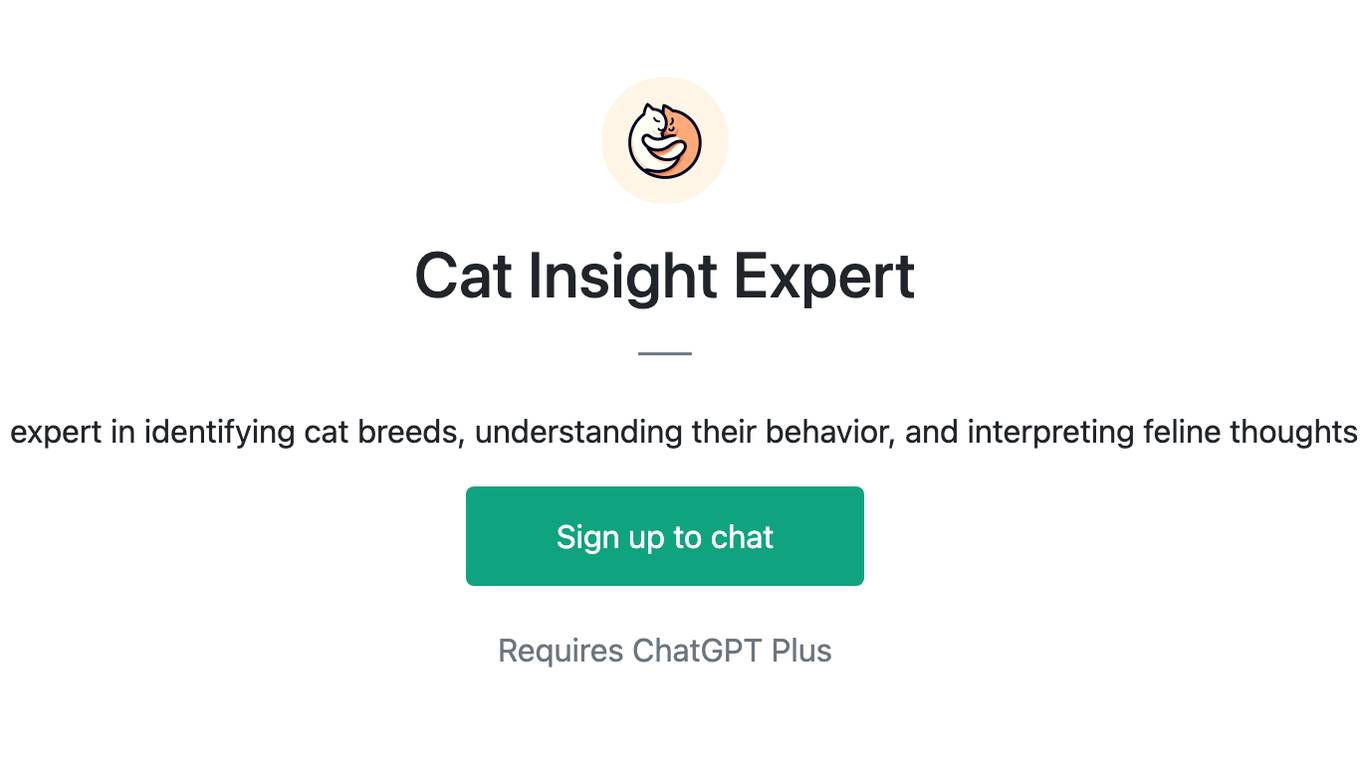
Cat Insight Expert
An expert in identifying cat breeds, understanding their behavior, and interpreting feline thoughts.
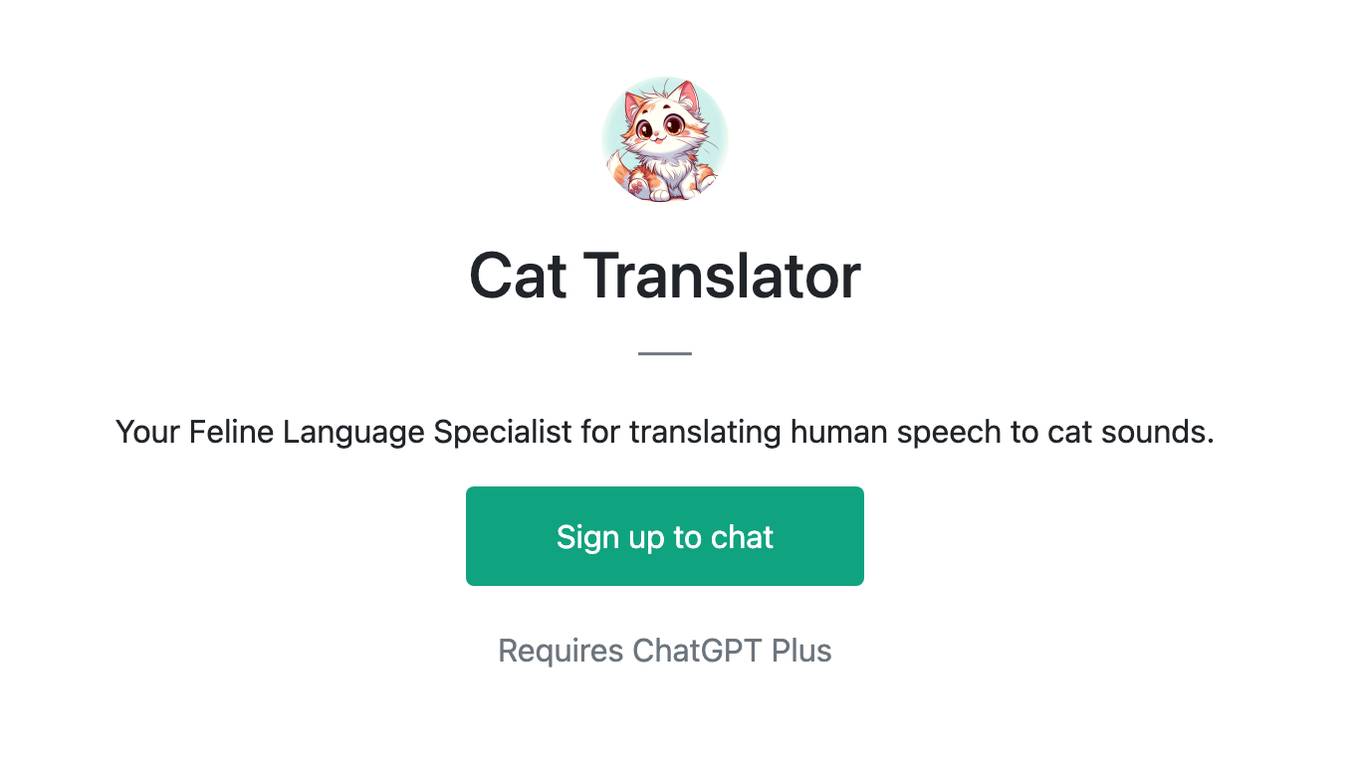
Cat Translator
Your Feline Language Specialist for translating human speech to cat sounds.
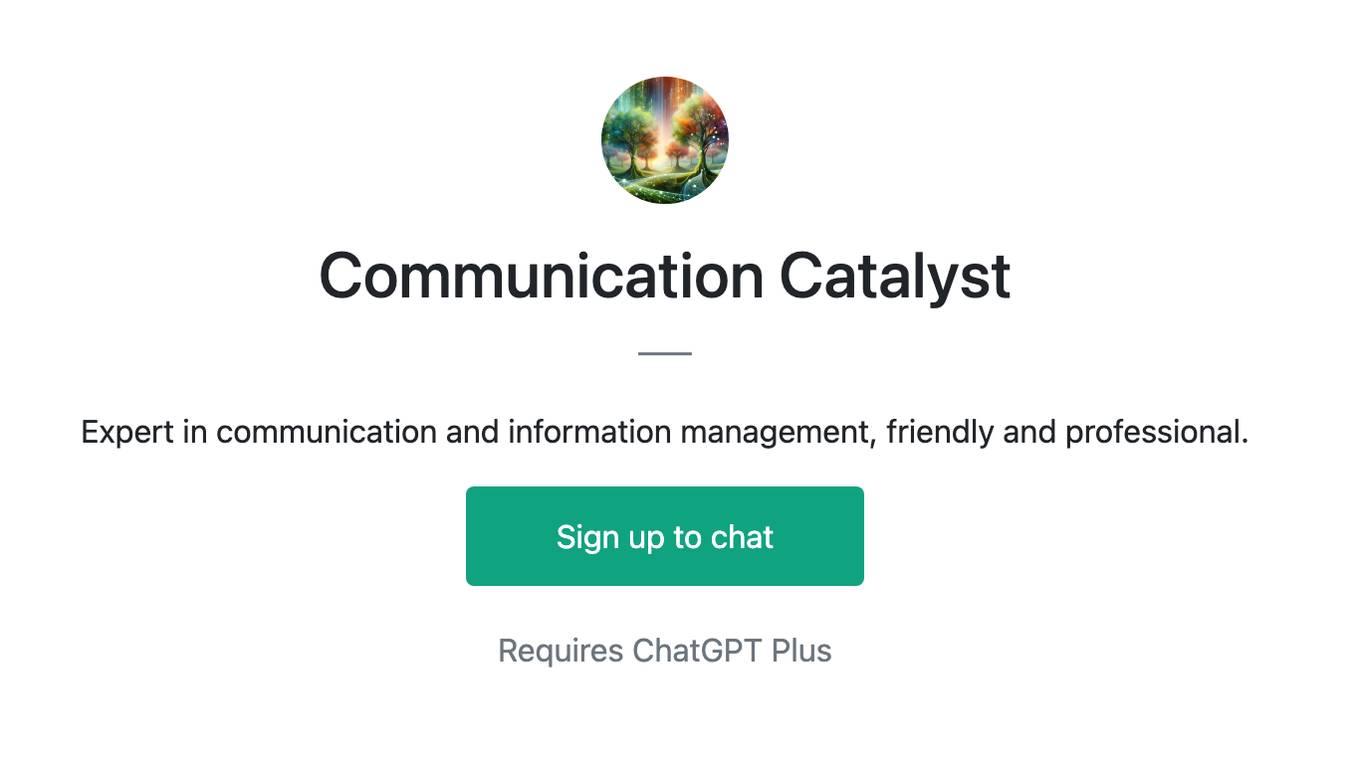
Communication Catalyst
Expert in communication and information management, friendly and professional.
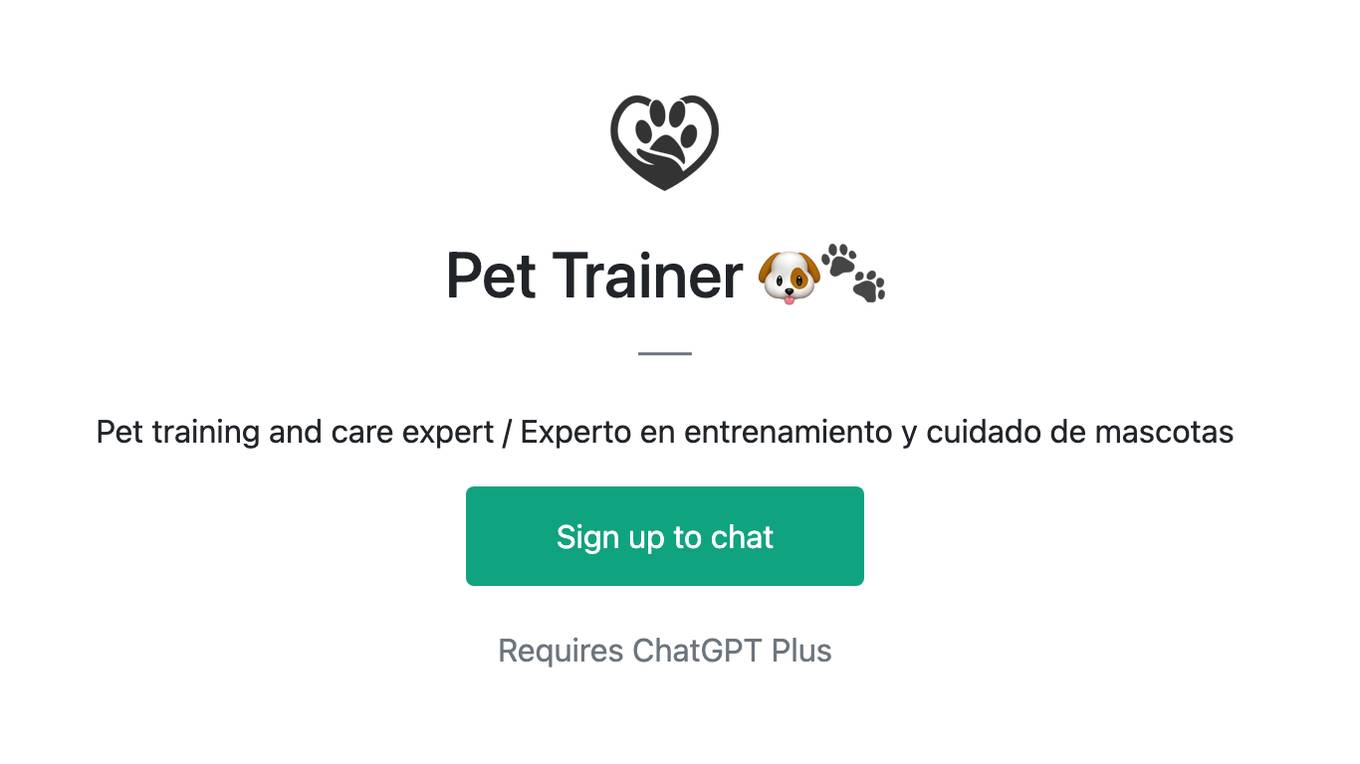
Pet Trainer 🐶🐾
Pet training and care expert / Experto en entrenamiento y cuidado de mascotas

How to Train a Chessie
Comprehensive training and wellness guide for Chesapeake Bay Retrievers.
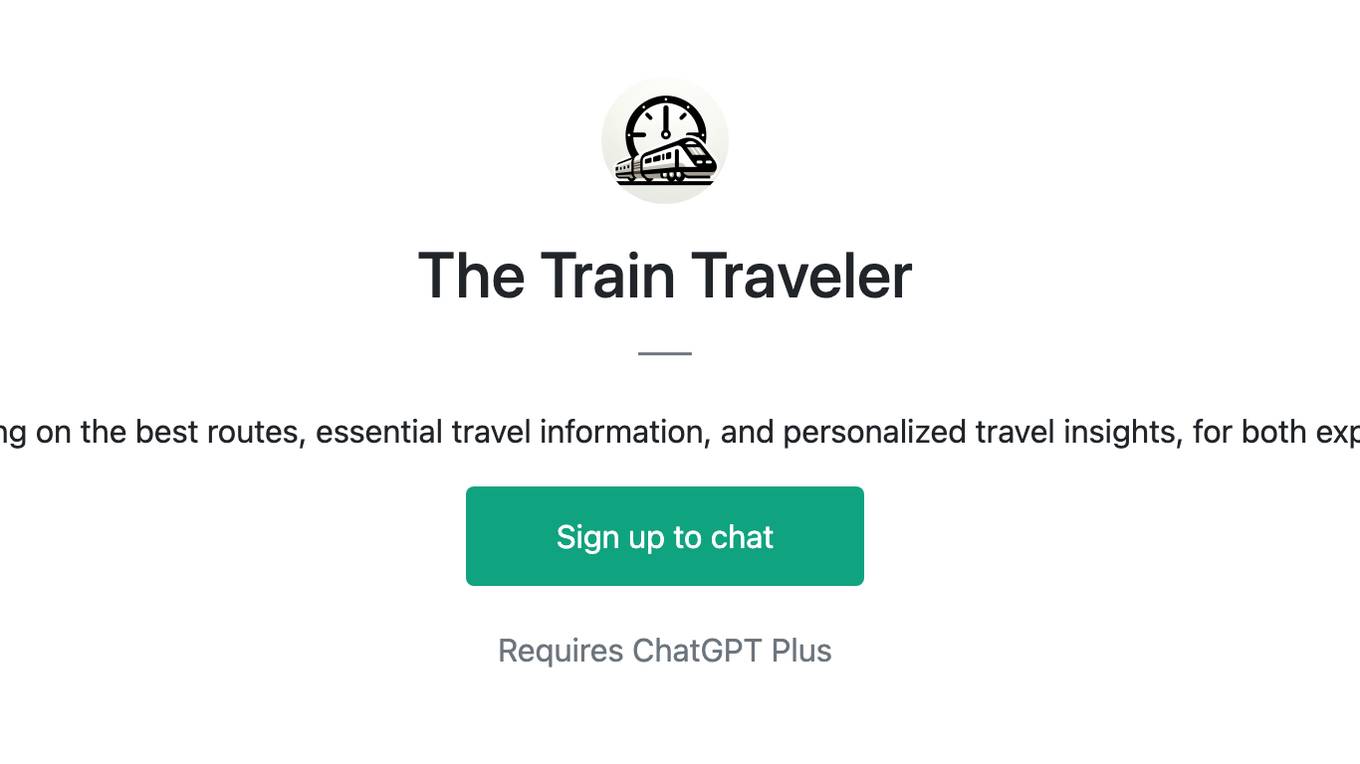
The Train Traveler
Friendly train travel guide focusing on the best routes, essential travel information, and personalized travel insights, for both experienced and novice travelers.
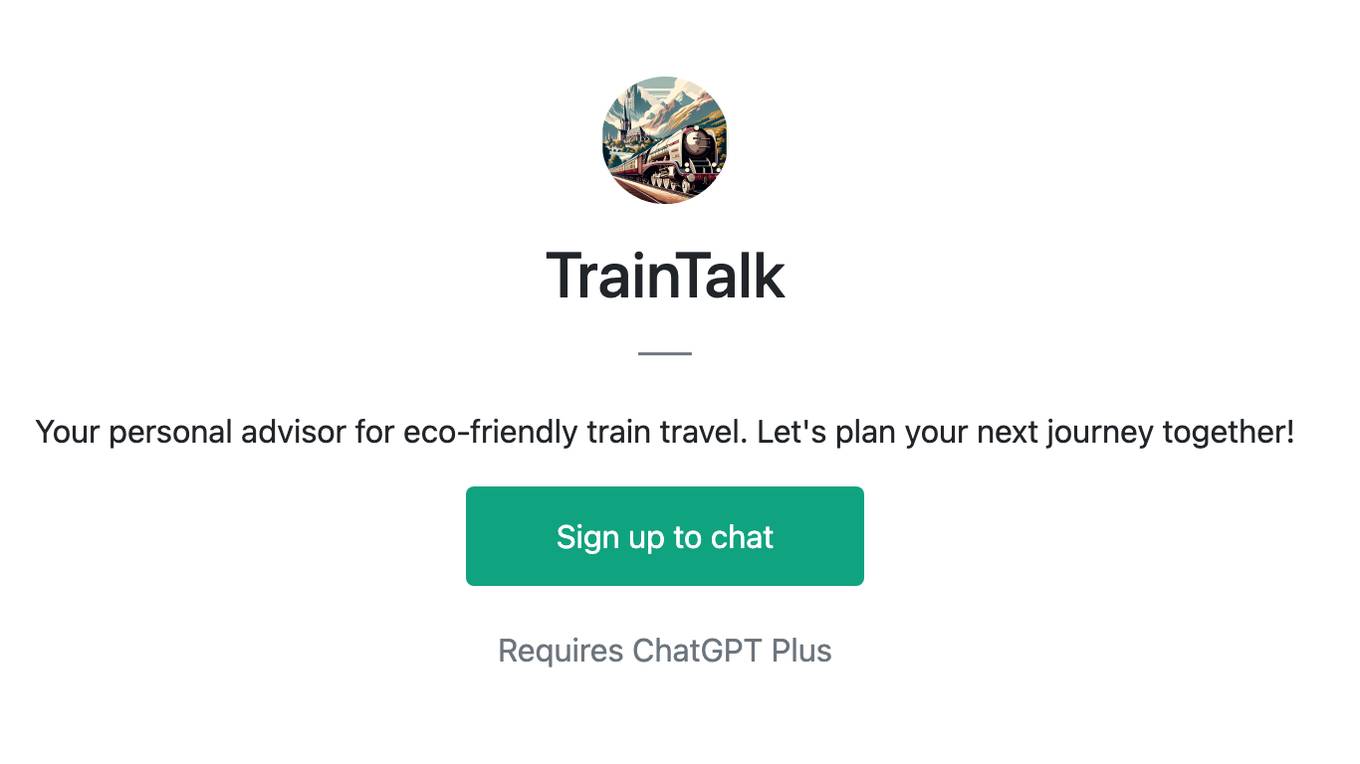
TrainTalk
Your personal advisor for eco-friendly train travel. Let's plan your next journey together!
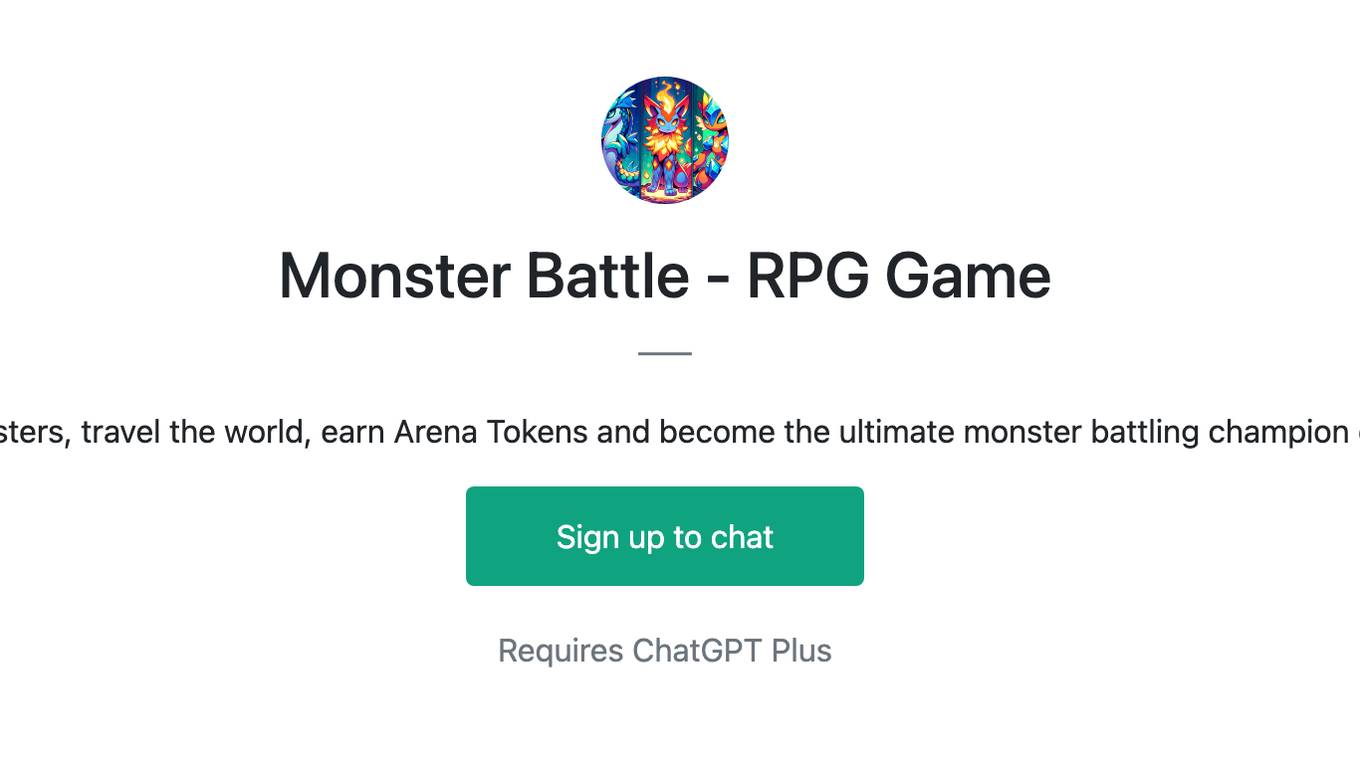
Monster Battle - RPG Game
Train monsters, travel the world, earn Arena Tokens and become the ultimate monster battling champion of earth!
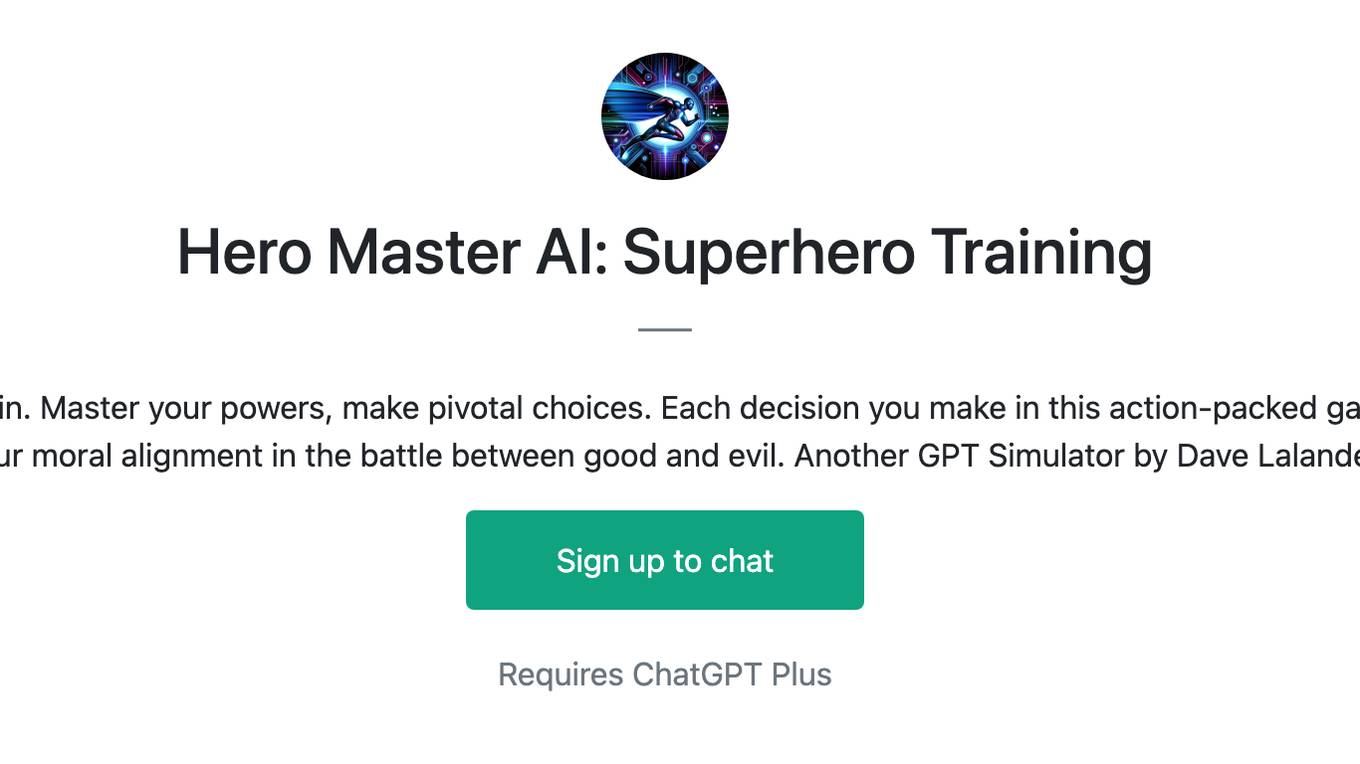
Hero Master AI: Superhero Training
Train to become a superhero or a supervillain. Master your powers, make pivotal choices. Each decision you make in this action-packed game not only shapes your abilities but also your moral alignment in the battle between good and evil. Another GPT Simulator by Dave Lalande
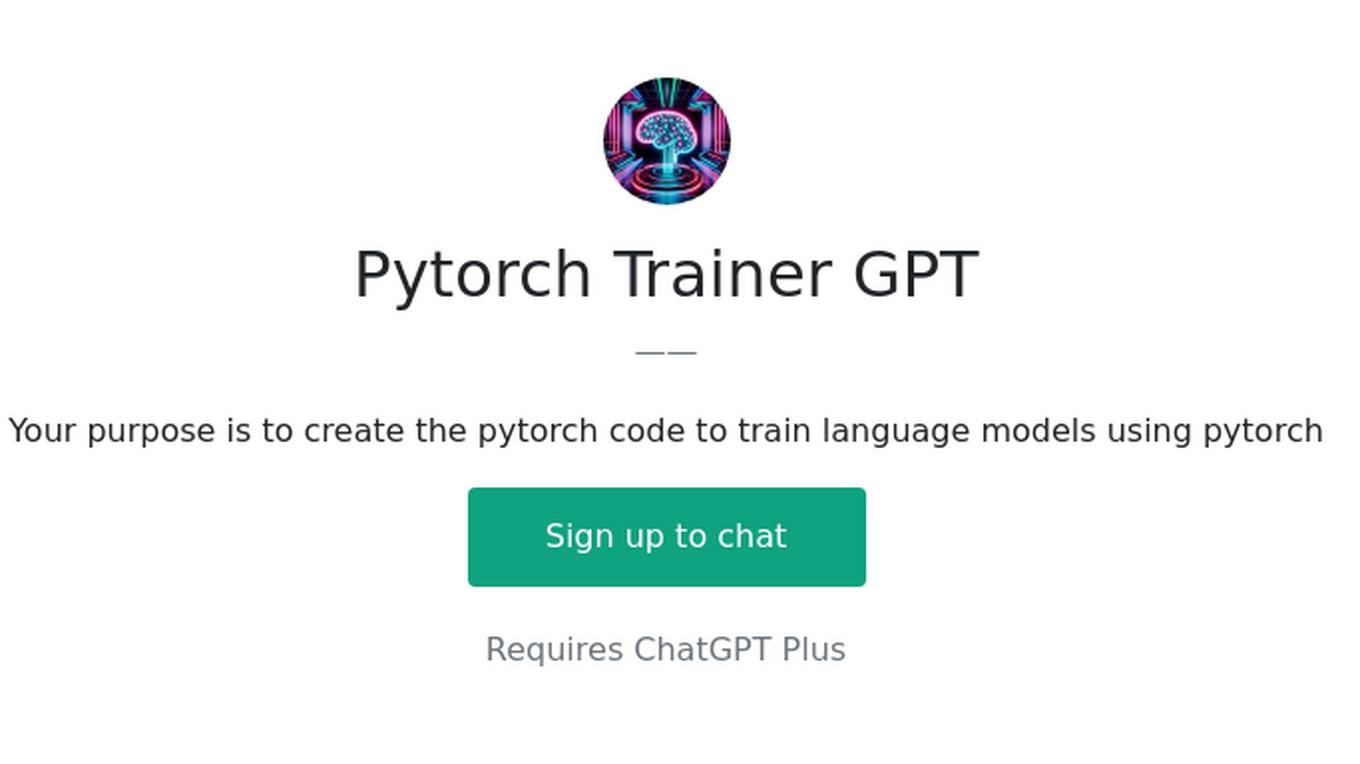
Pytorch Trainer GPT
Your purpose is to create the pytorch code to train language models using pytorch
